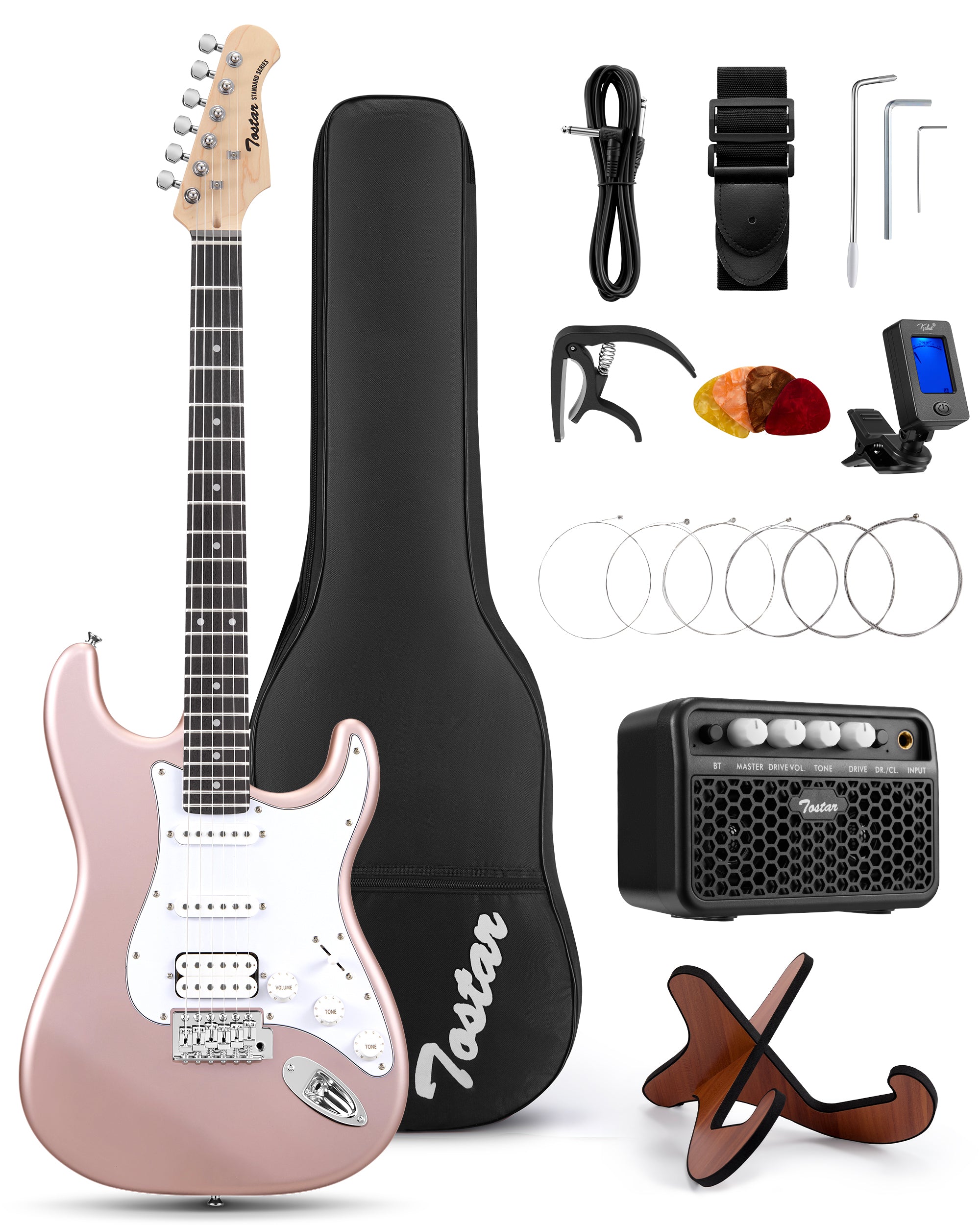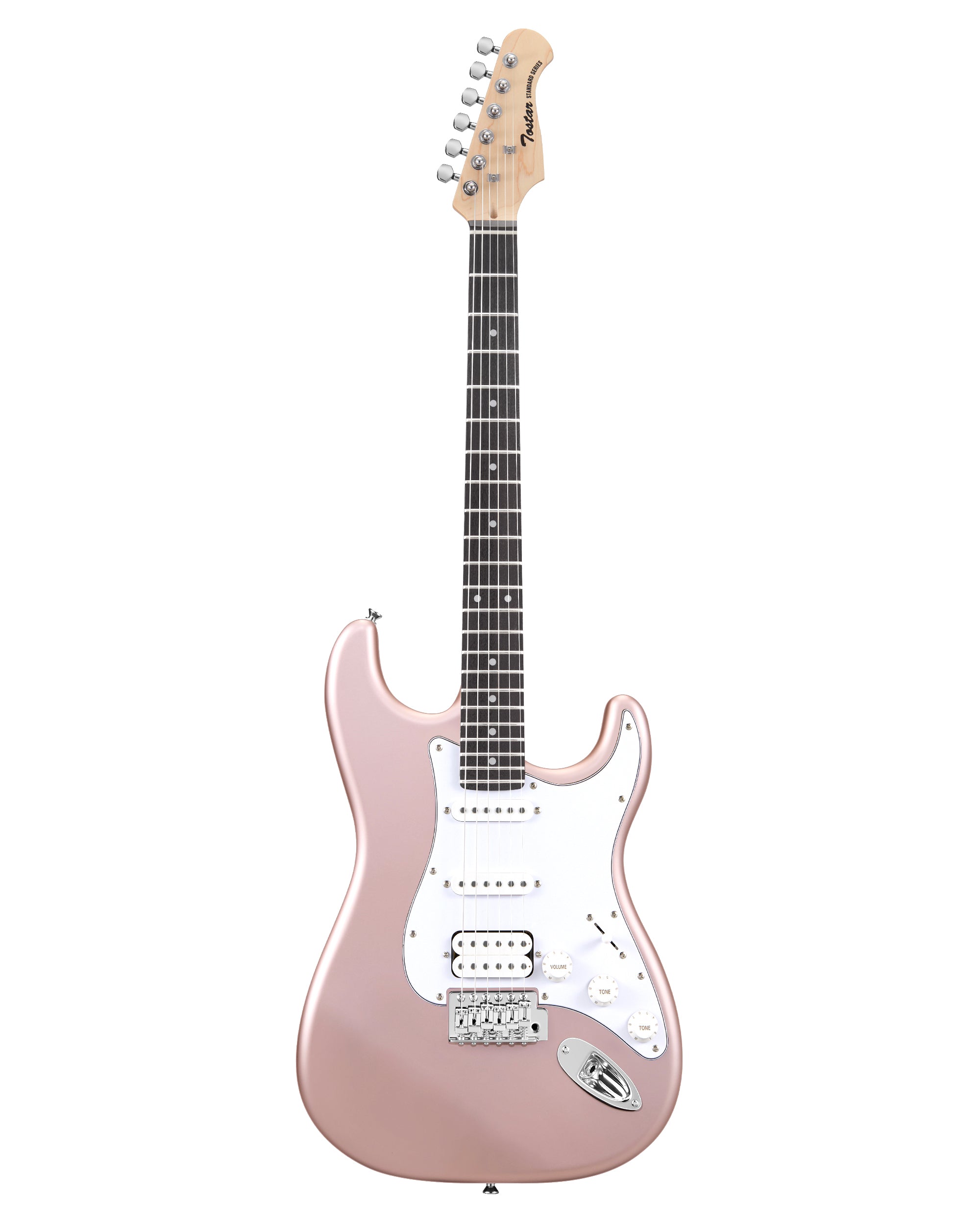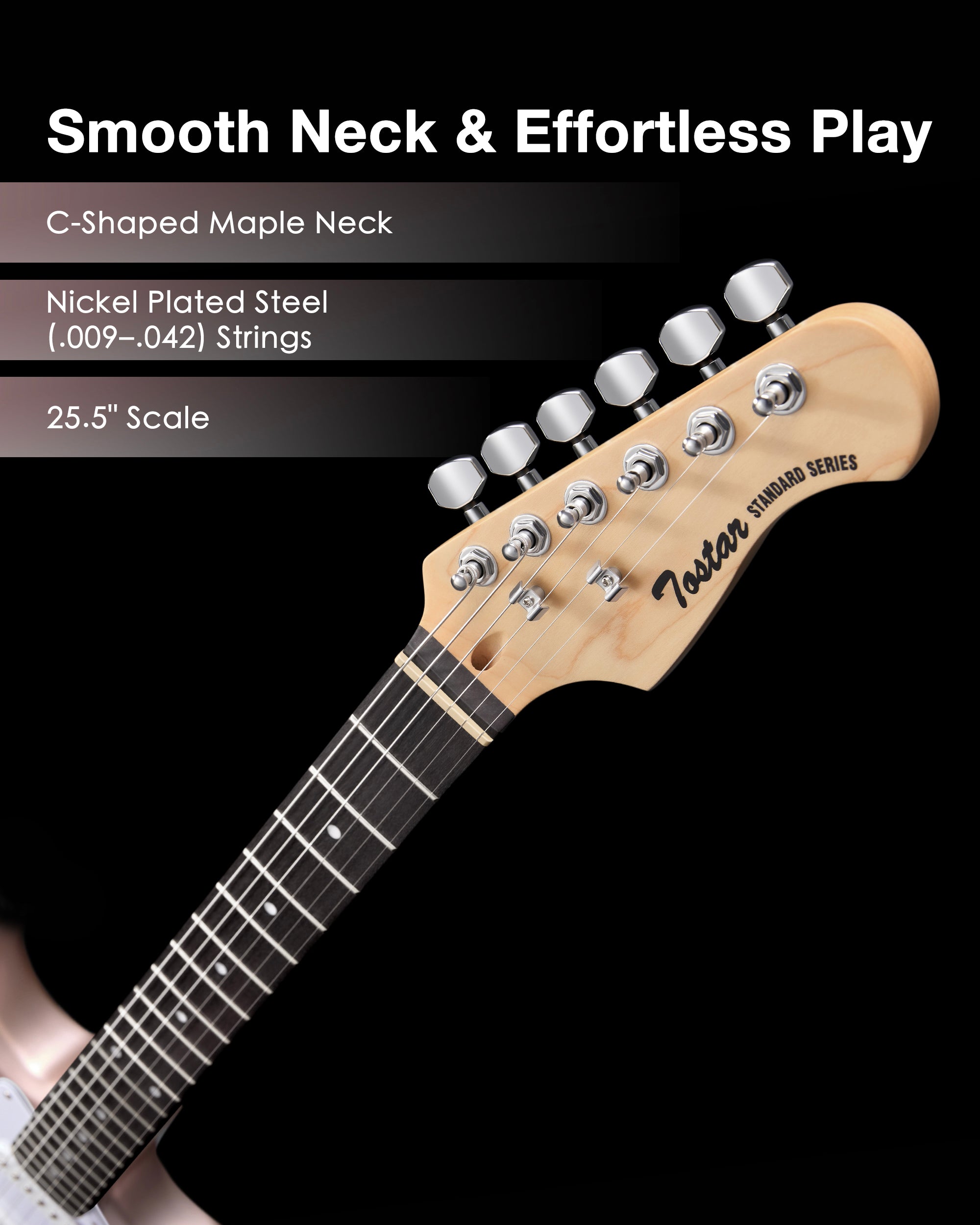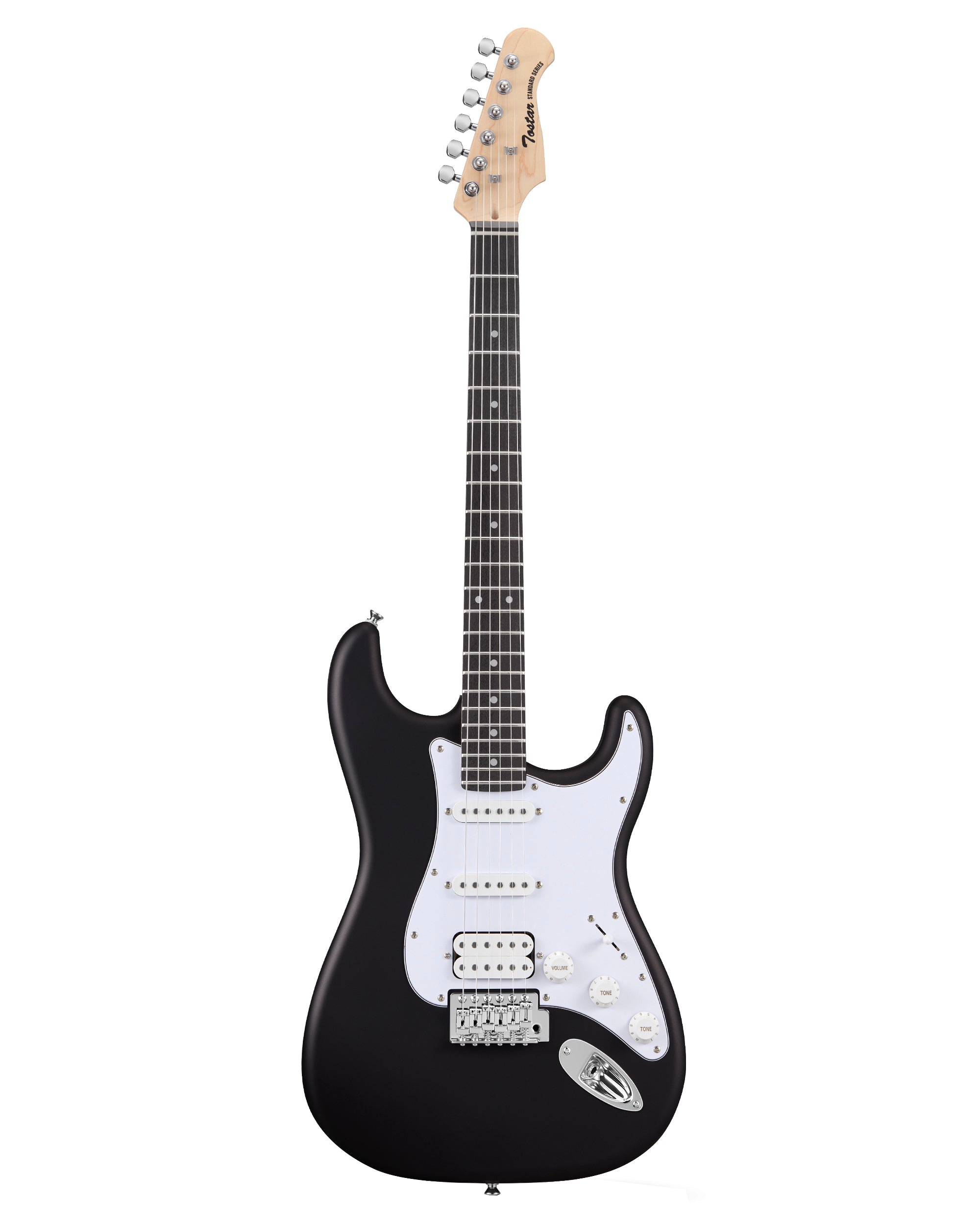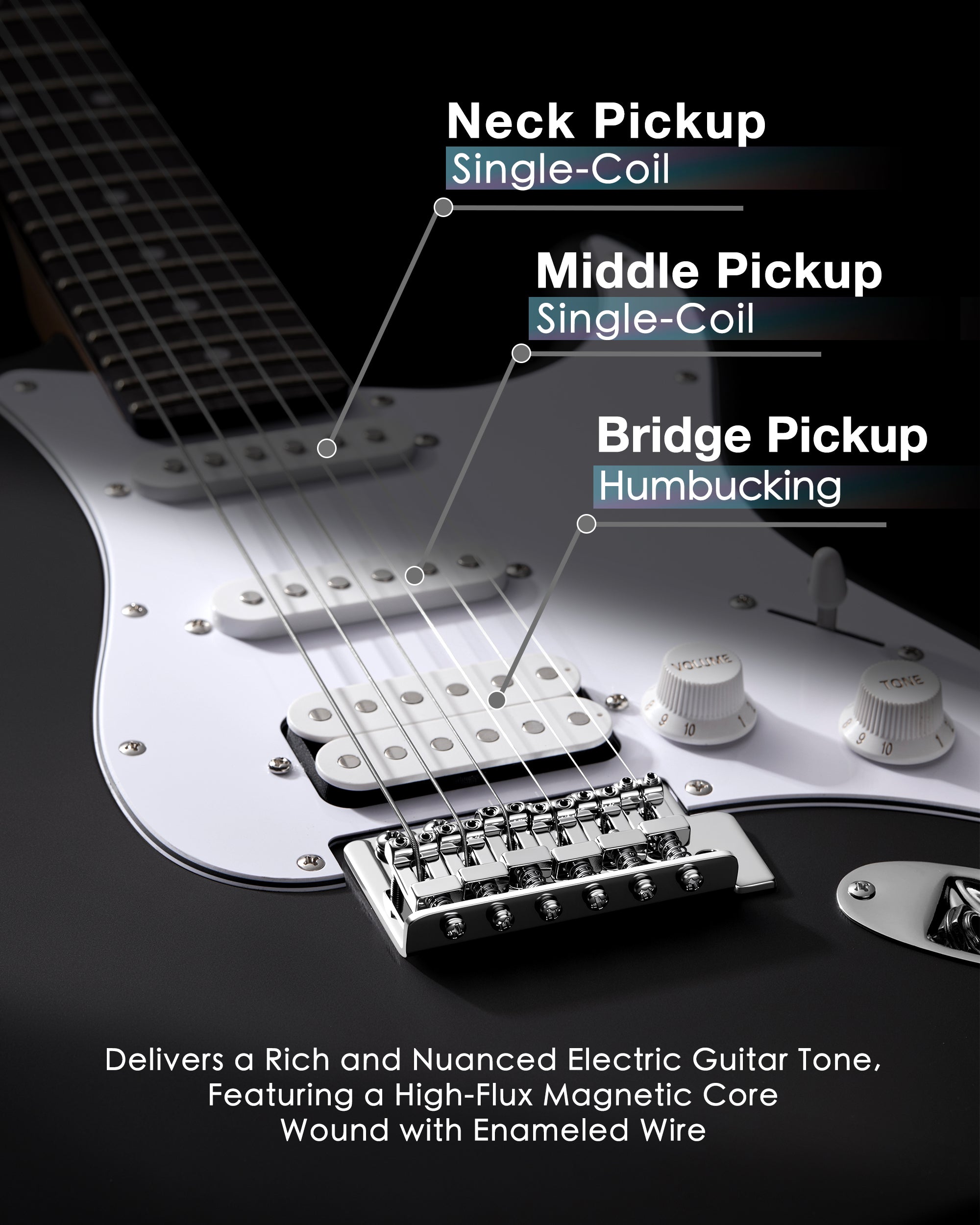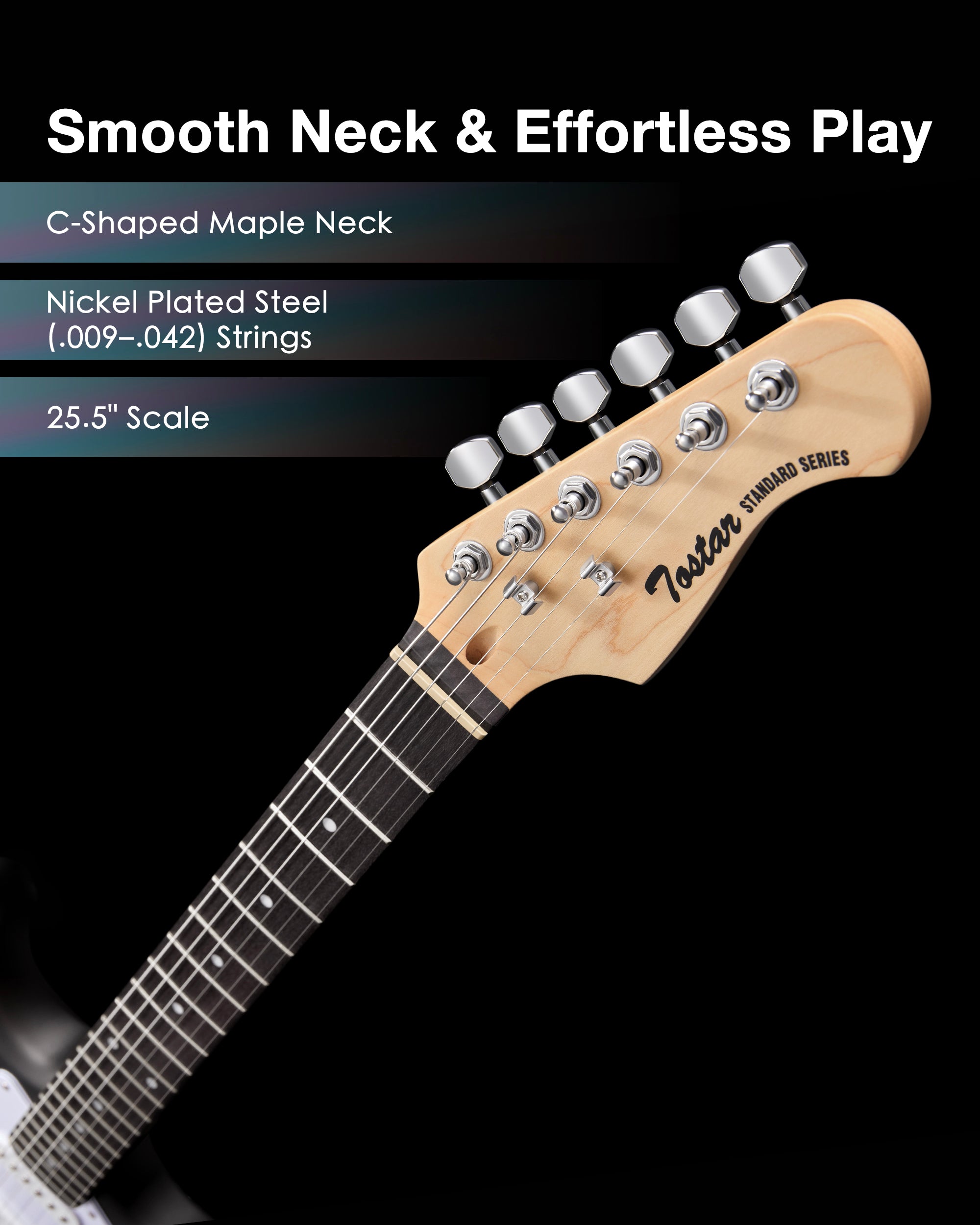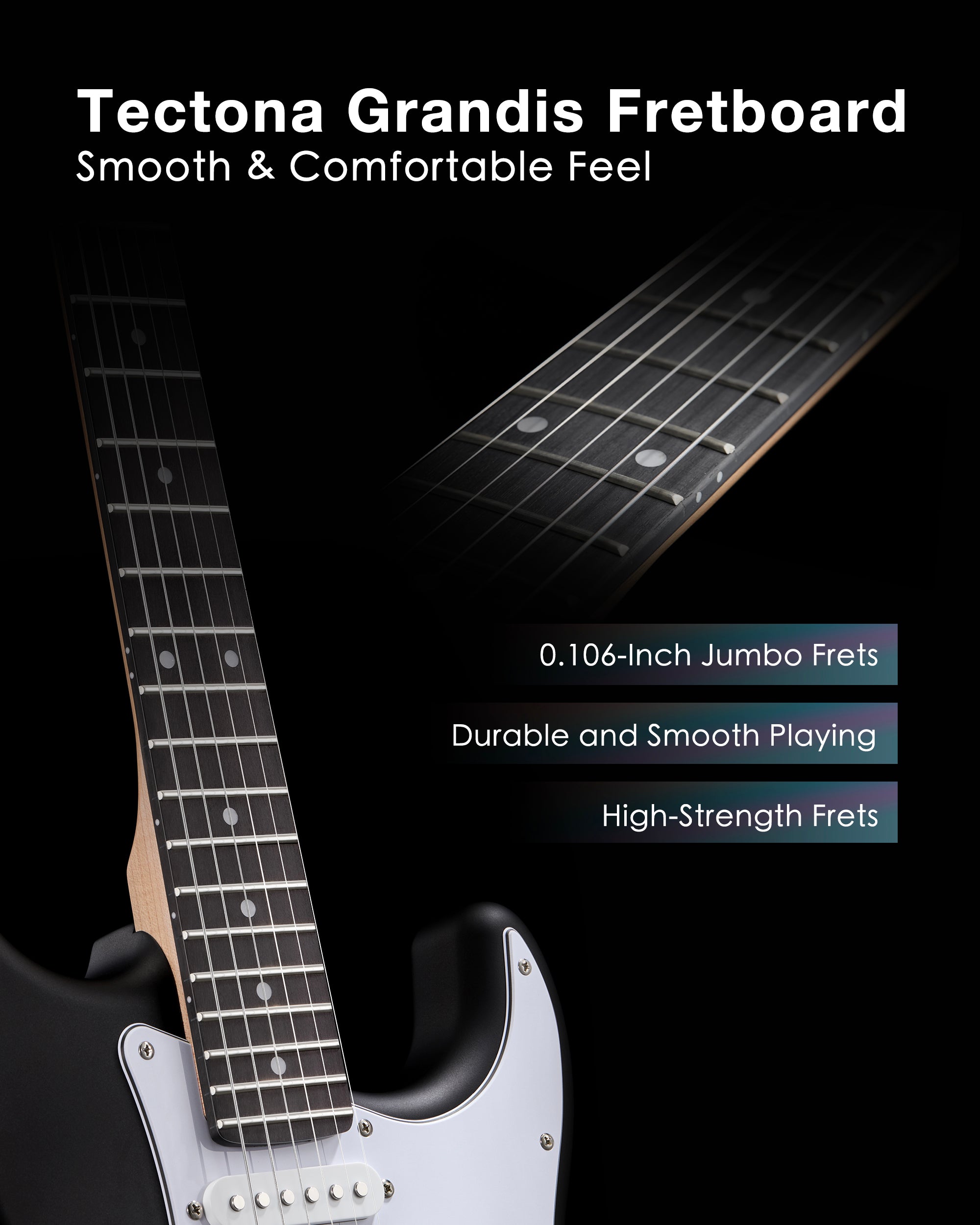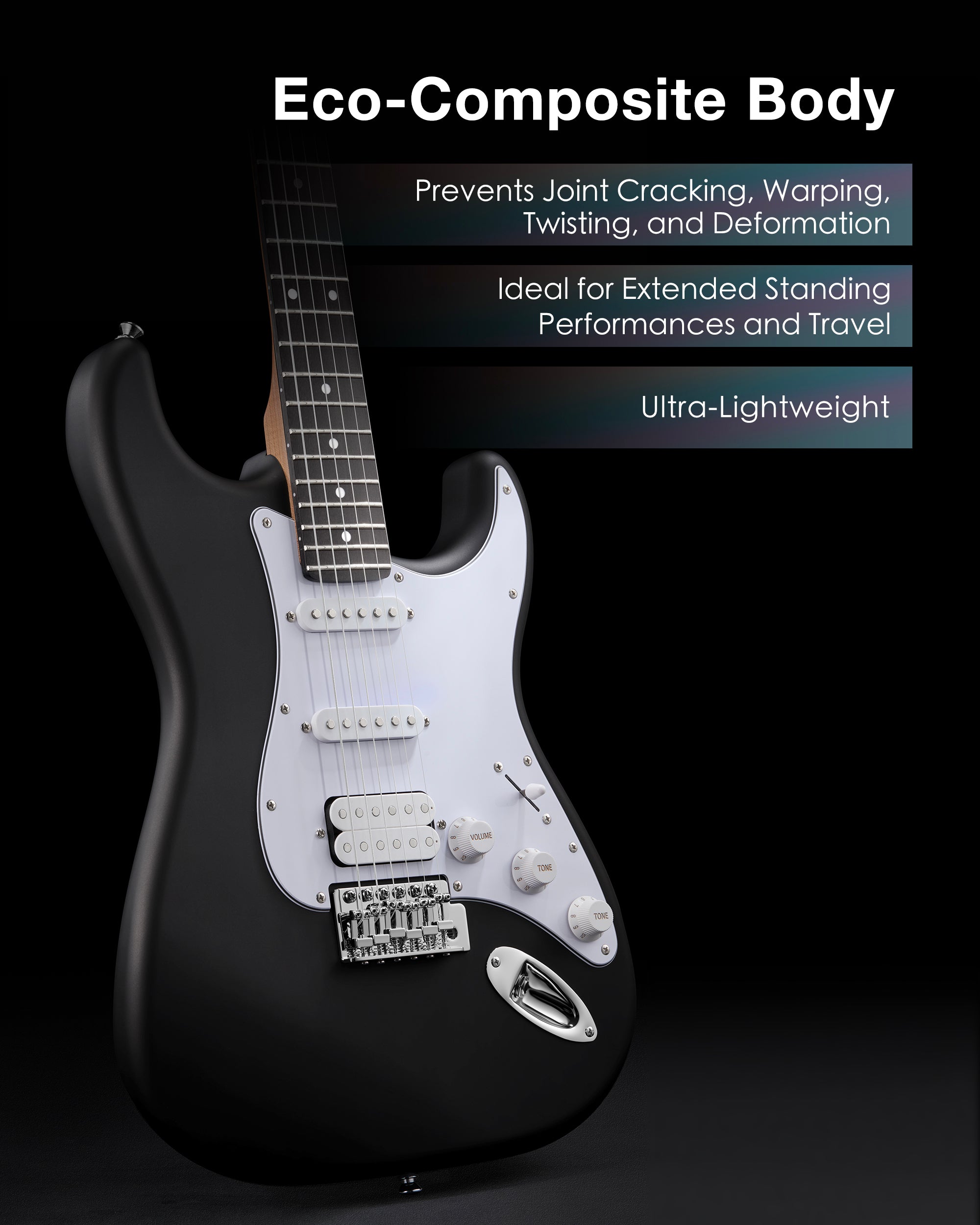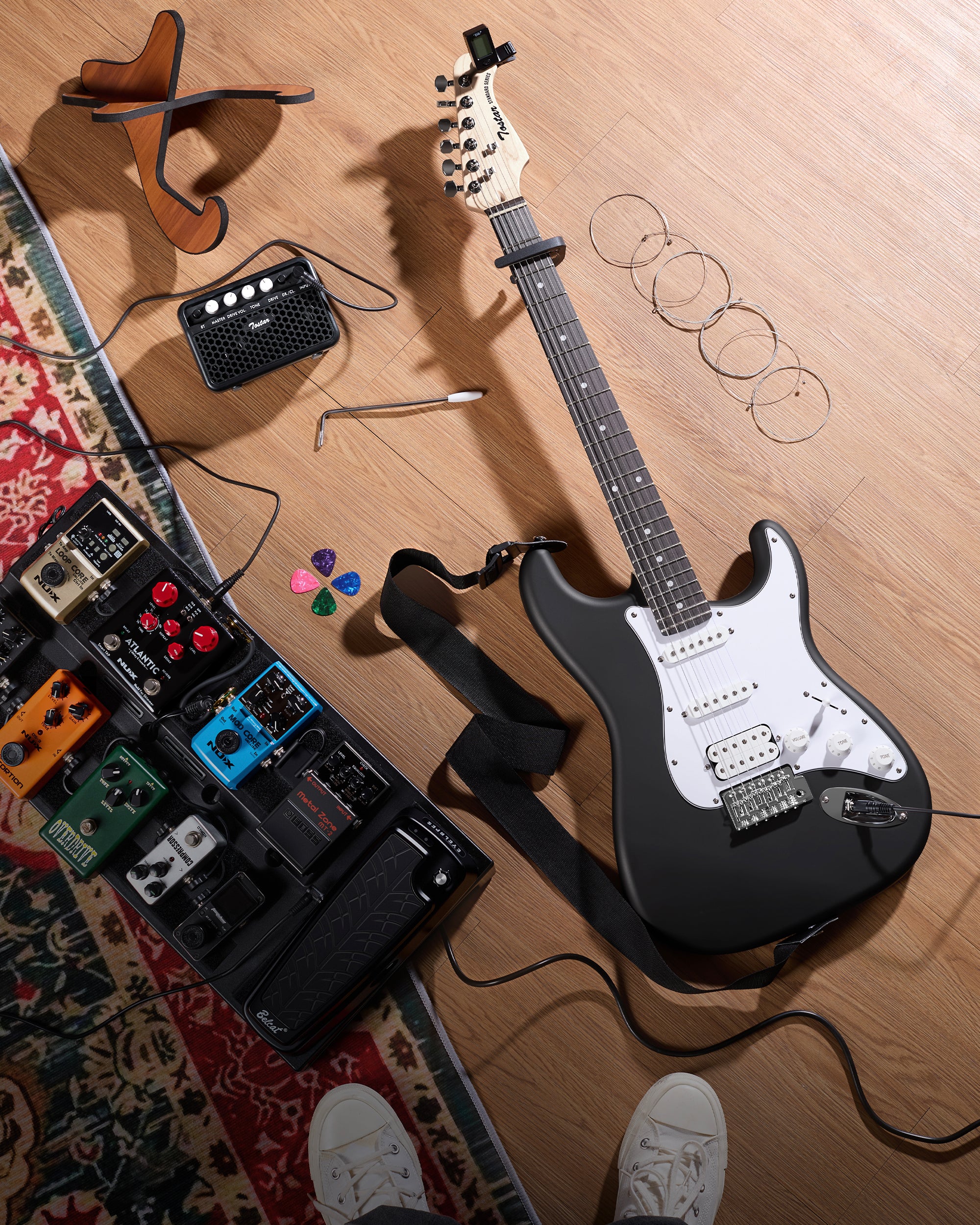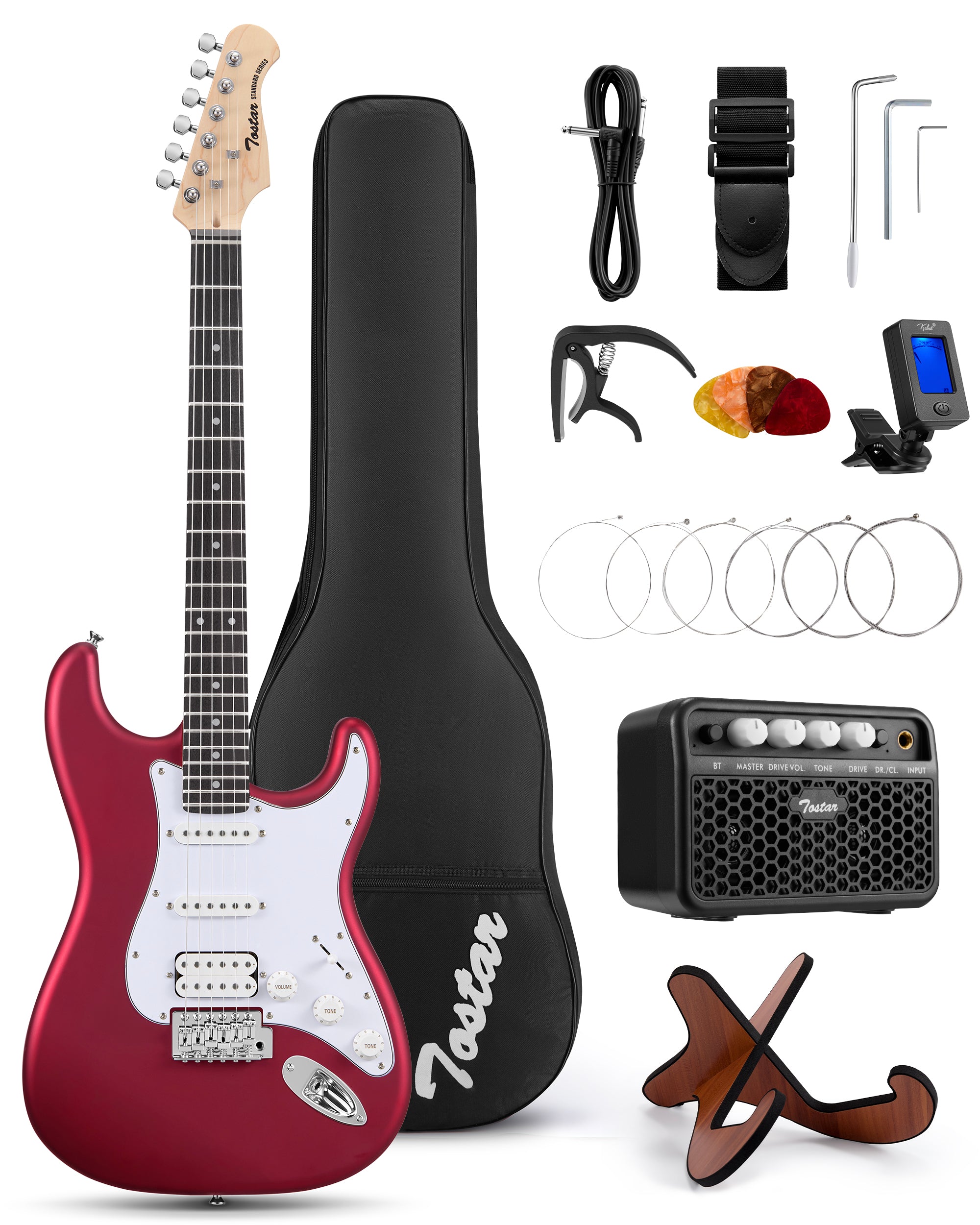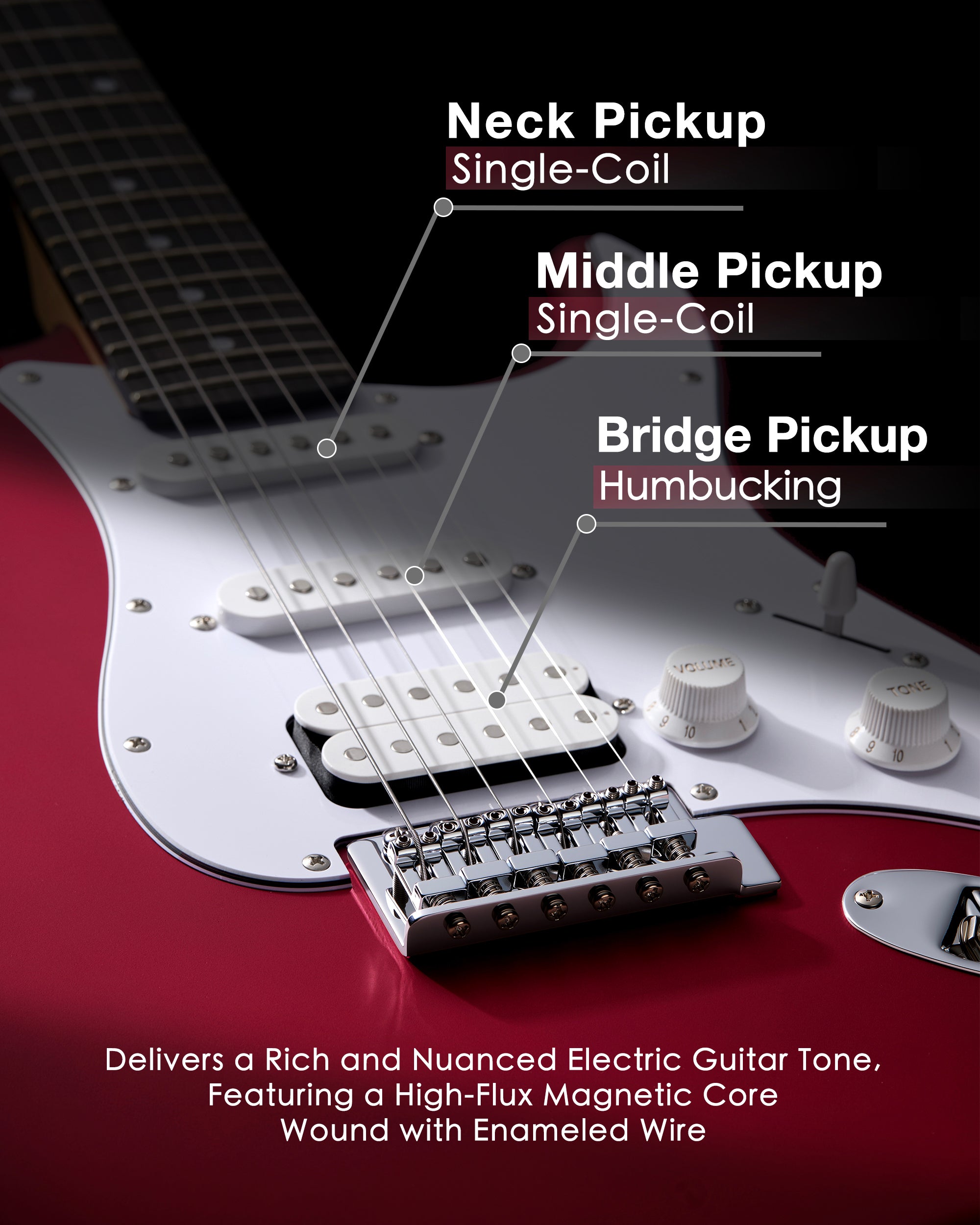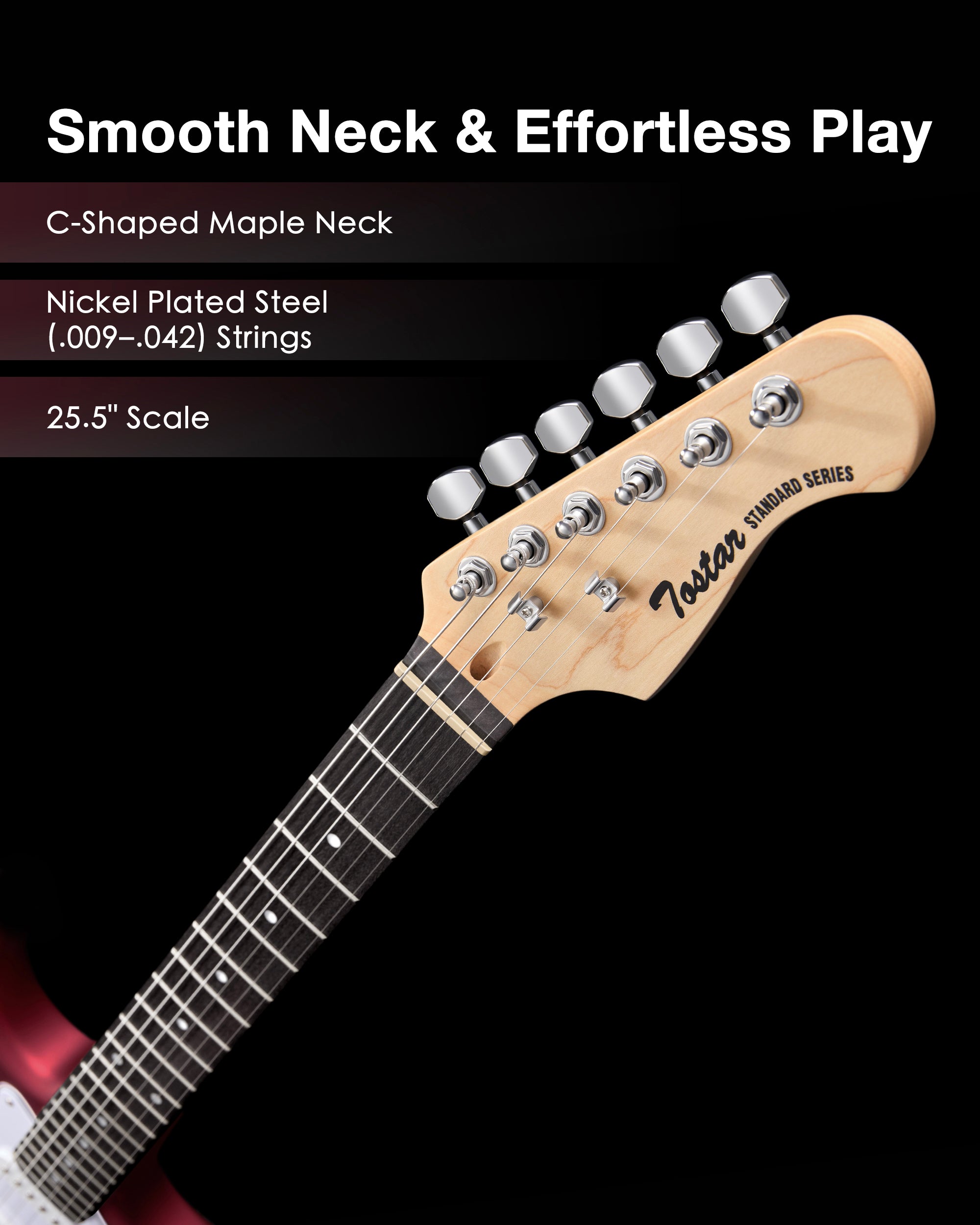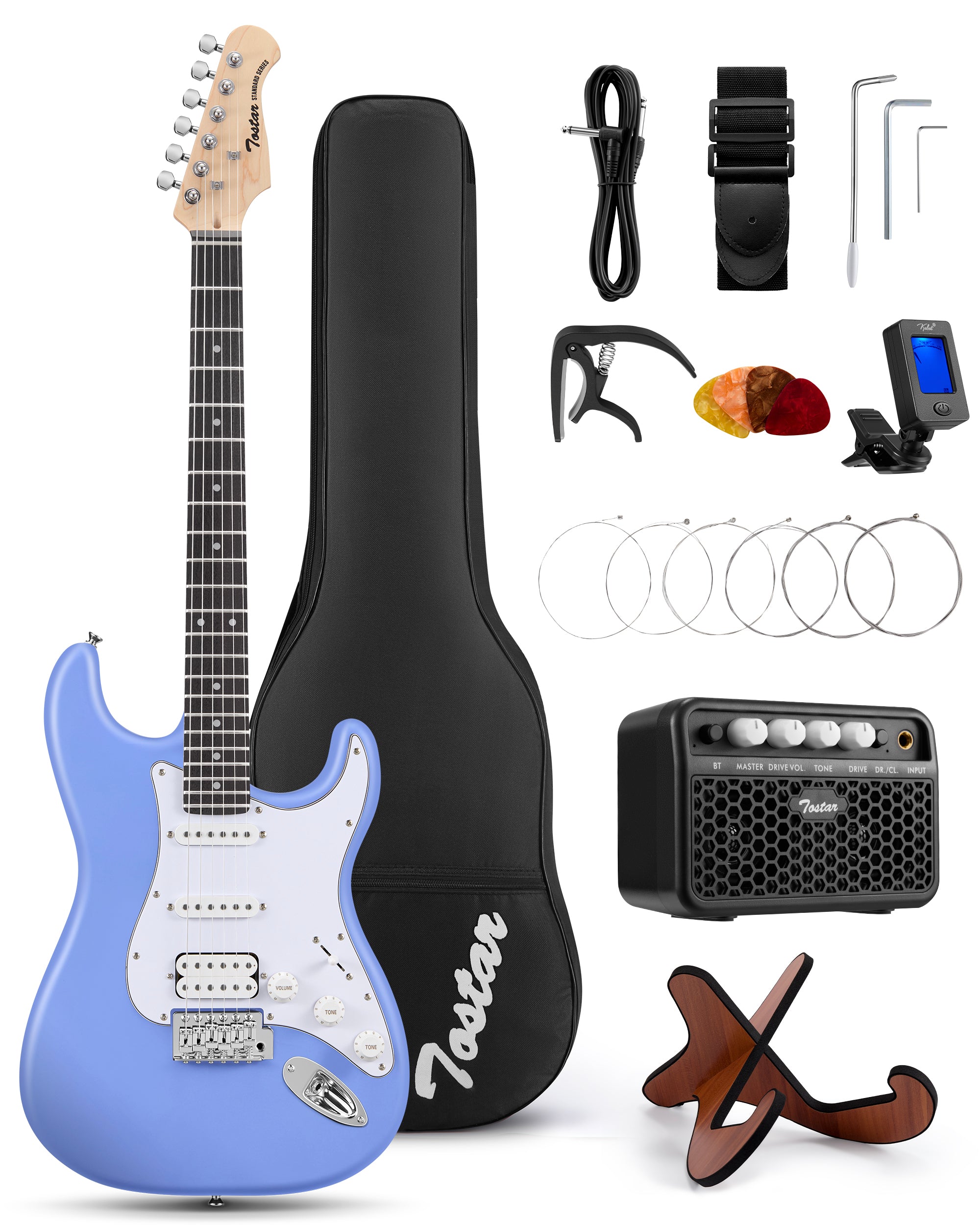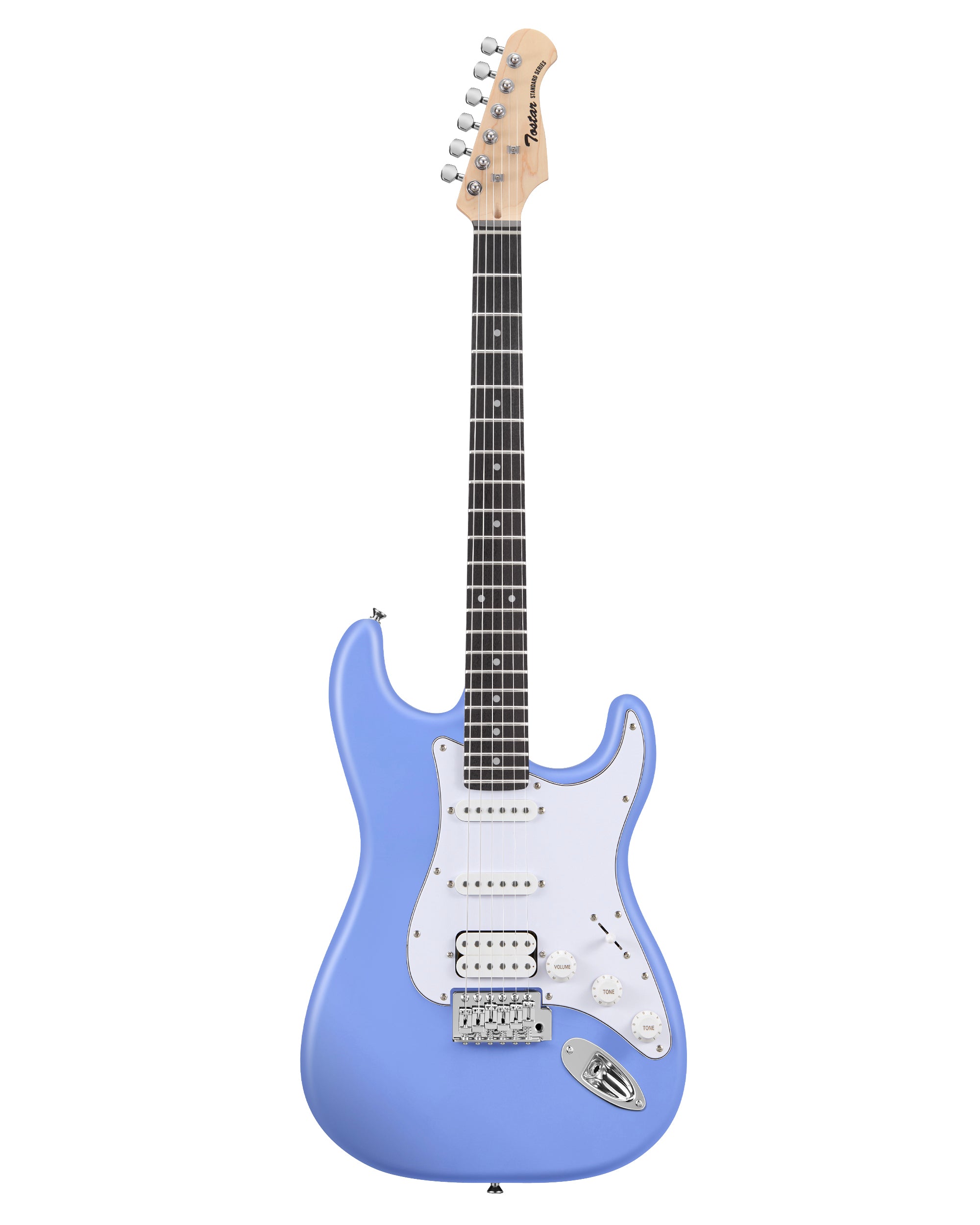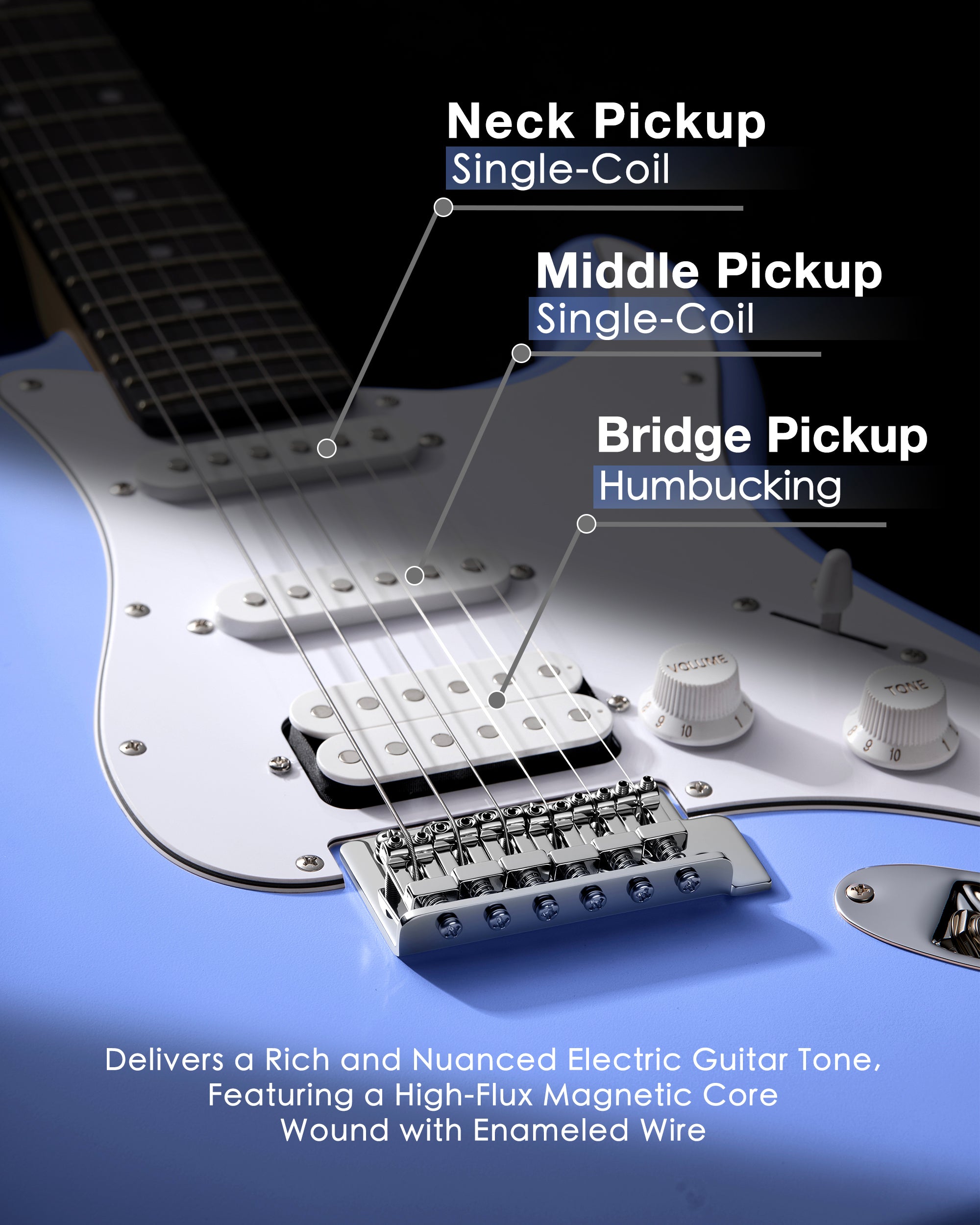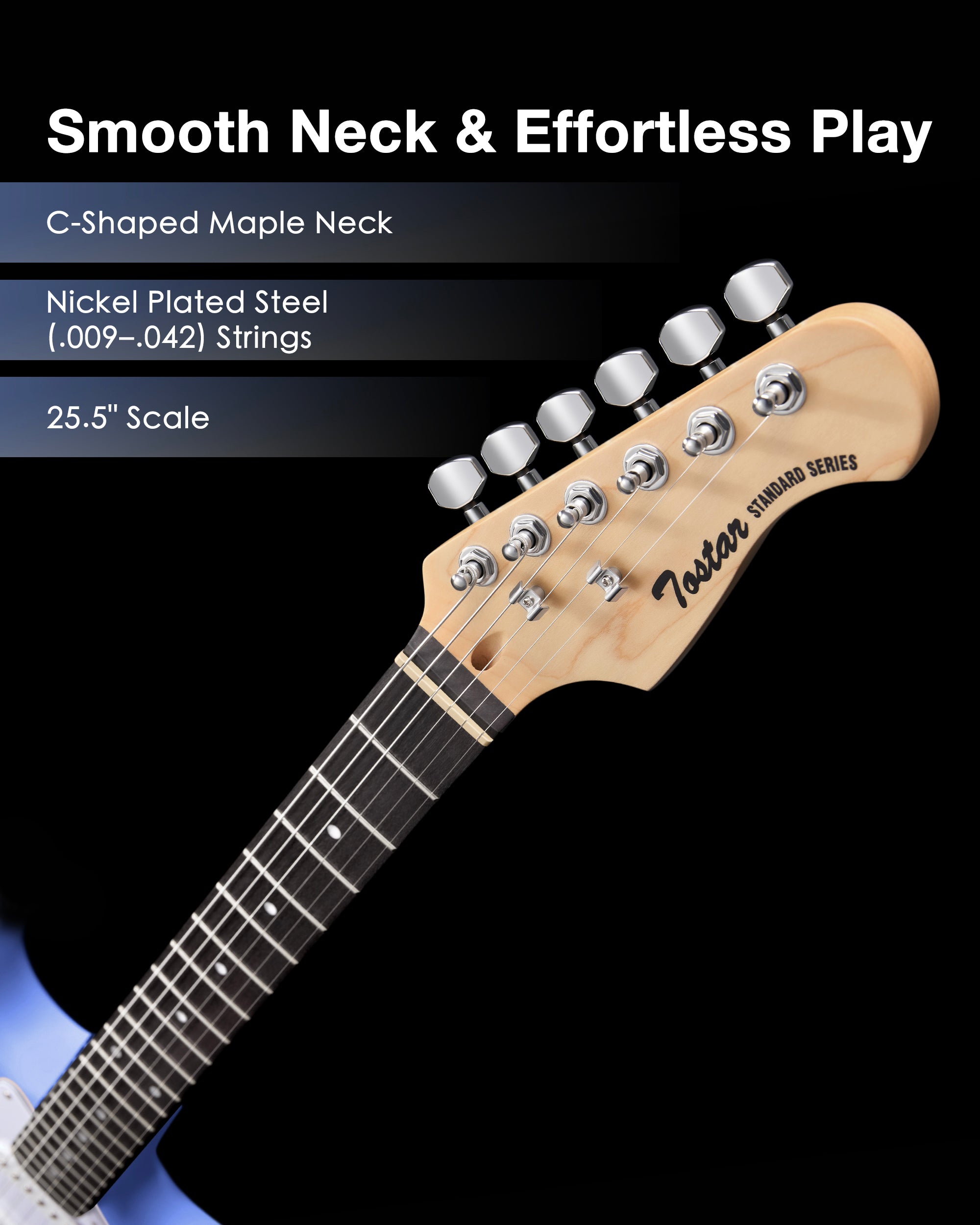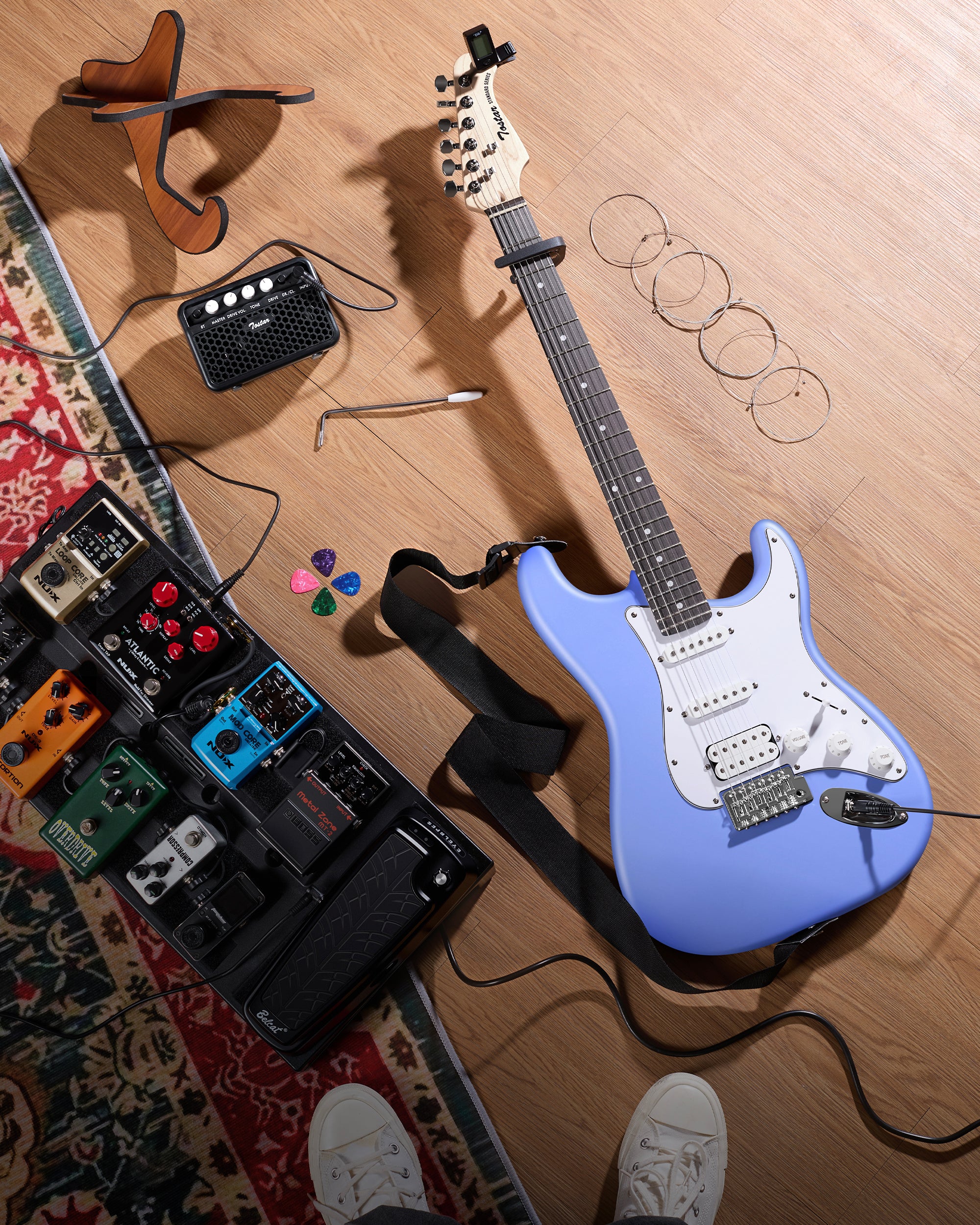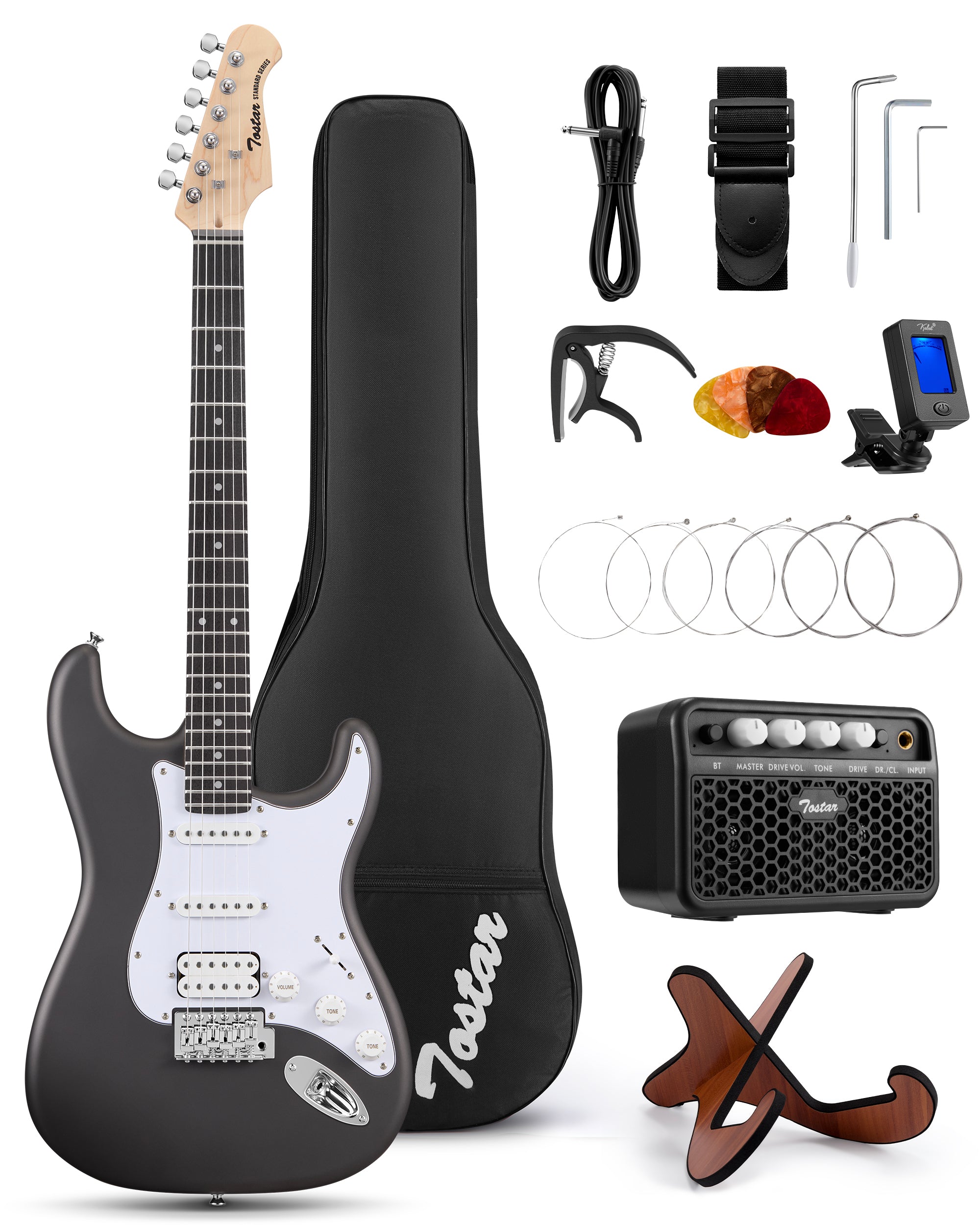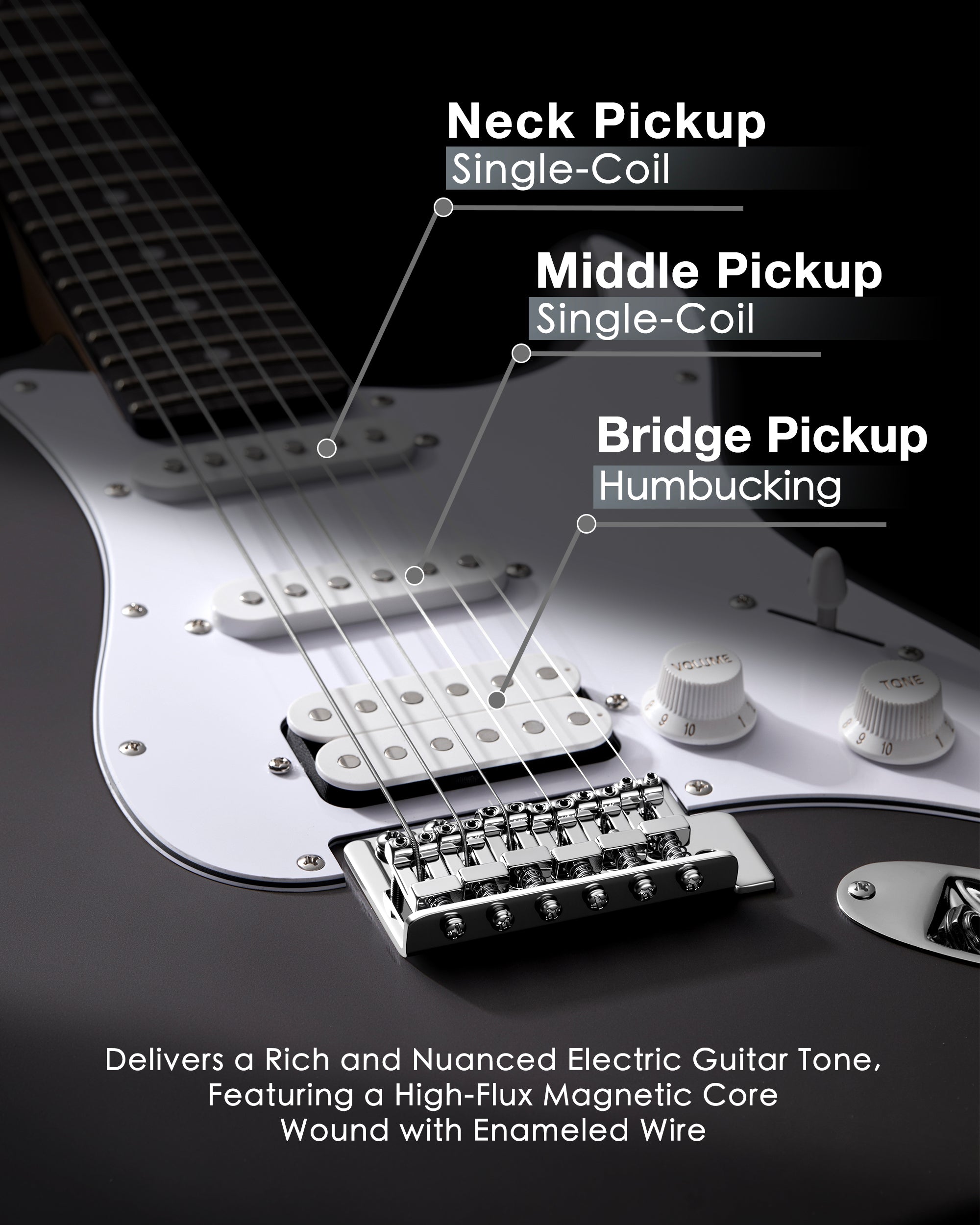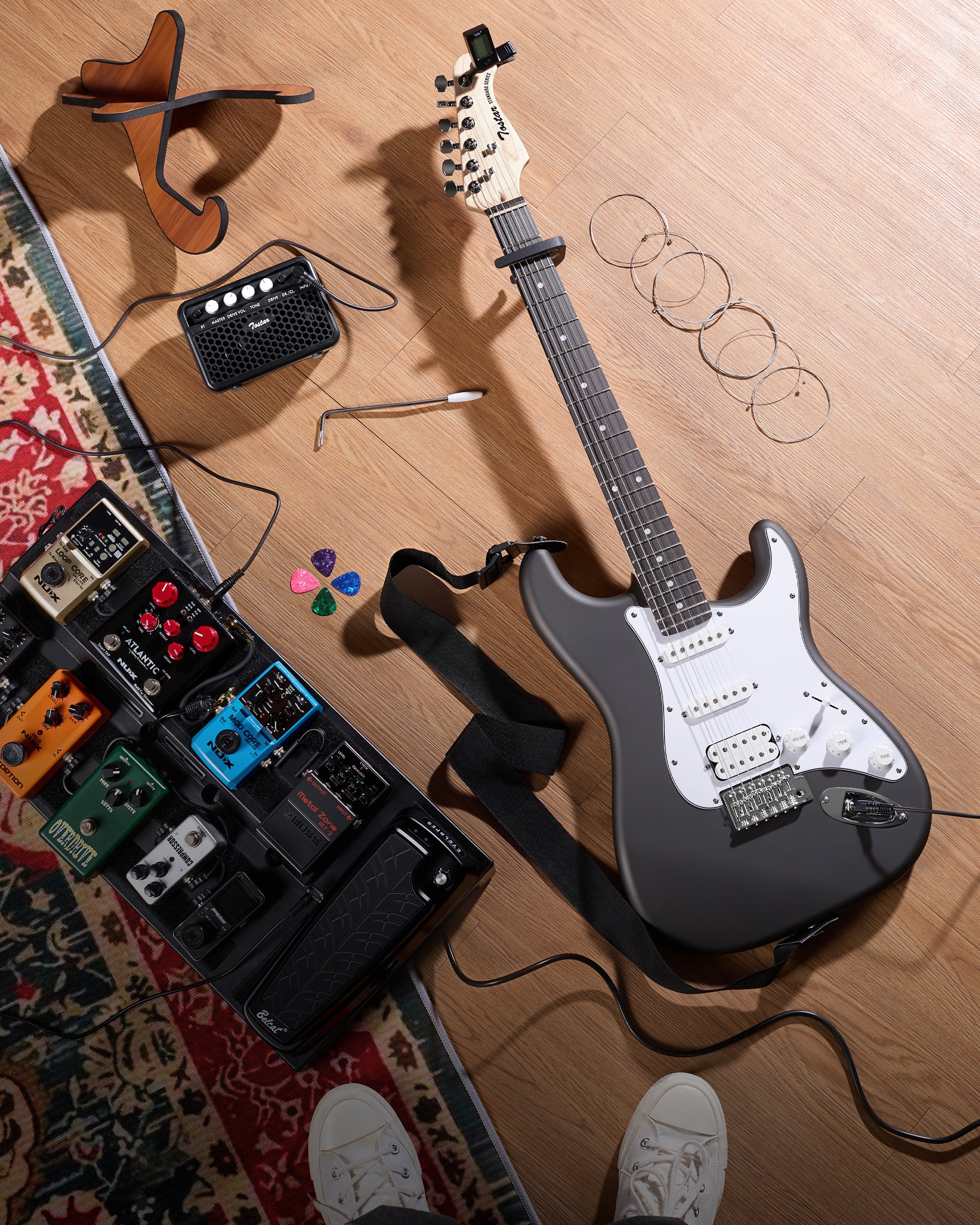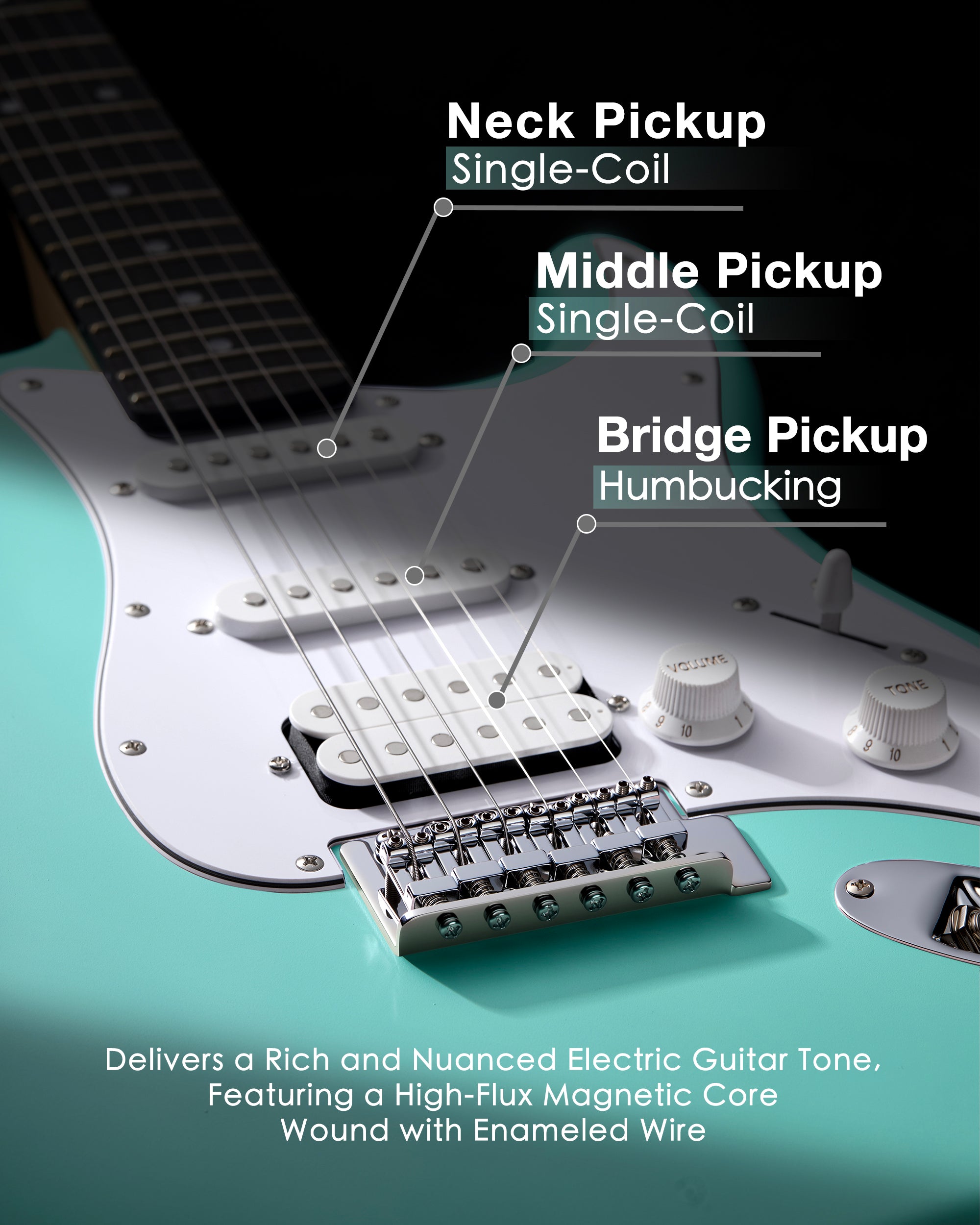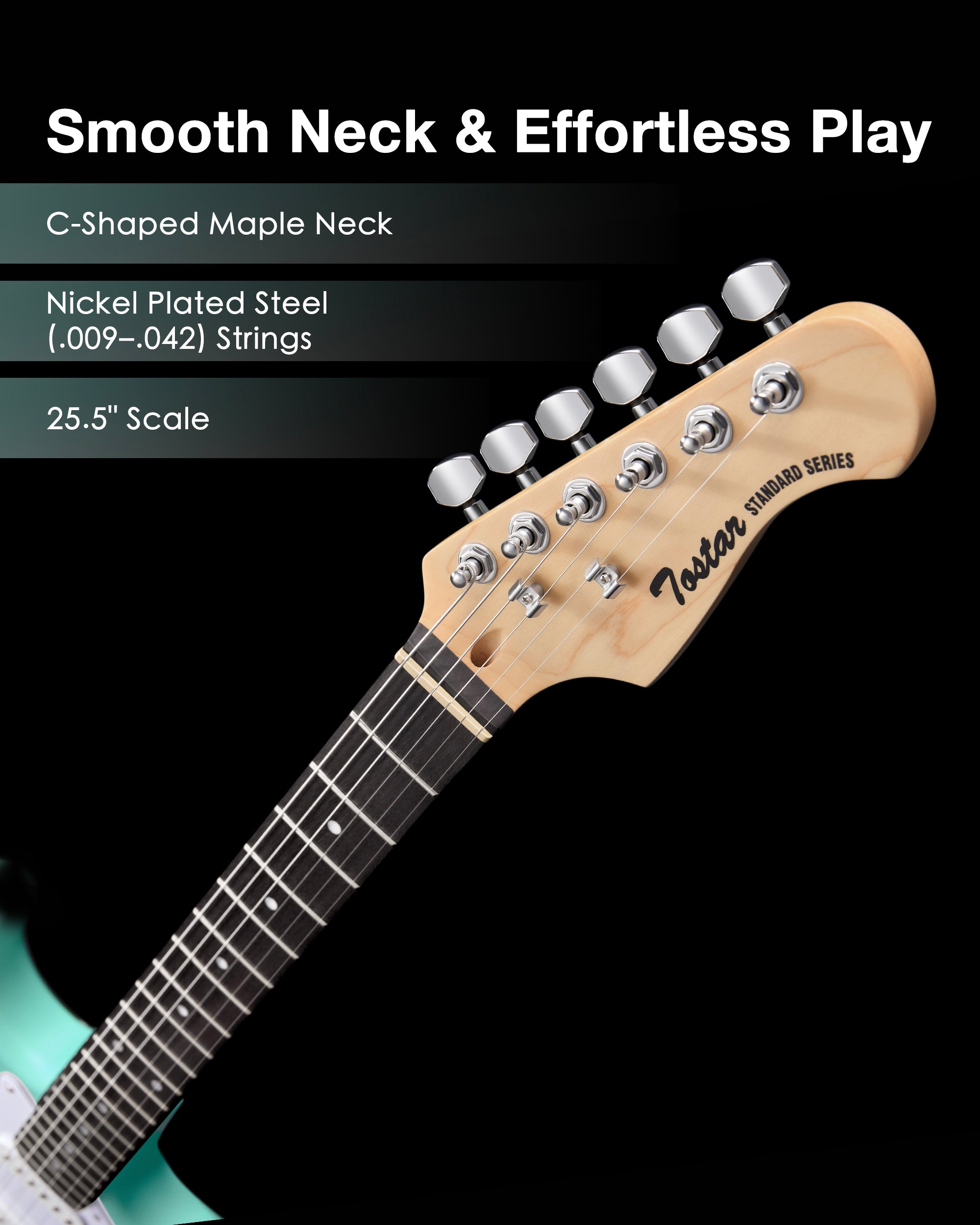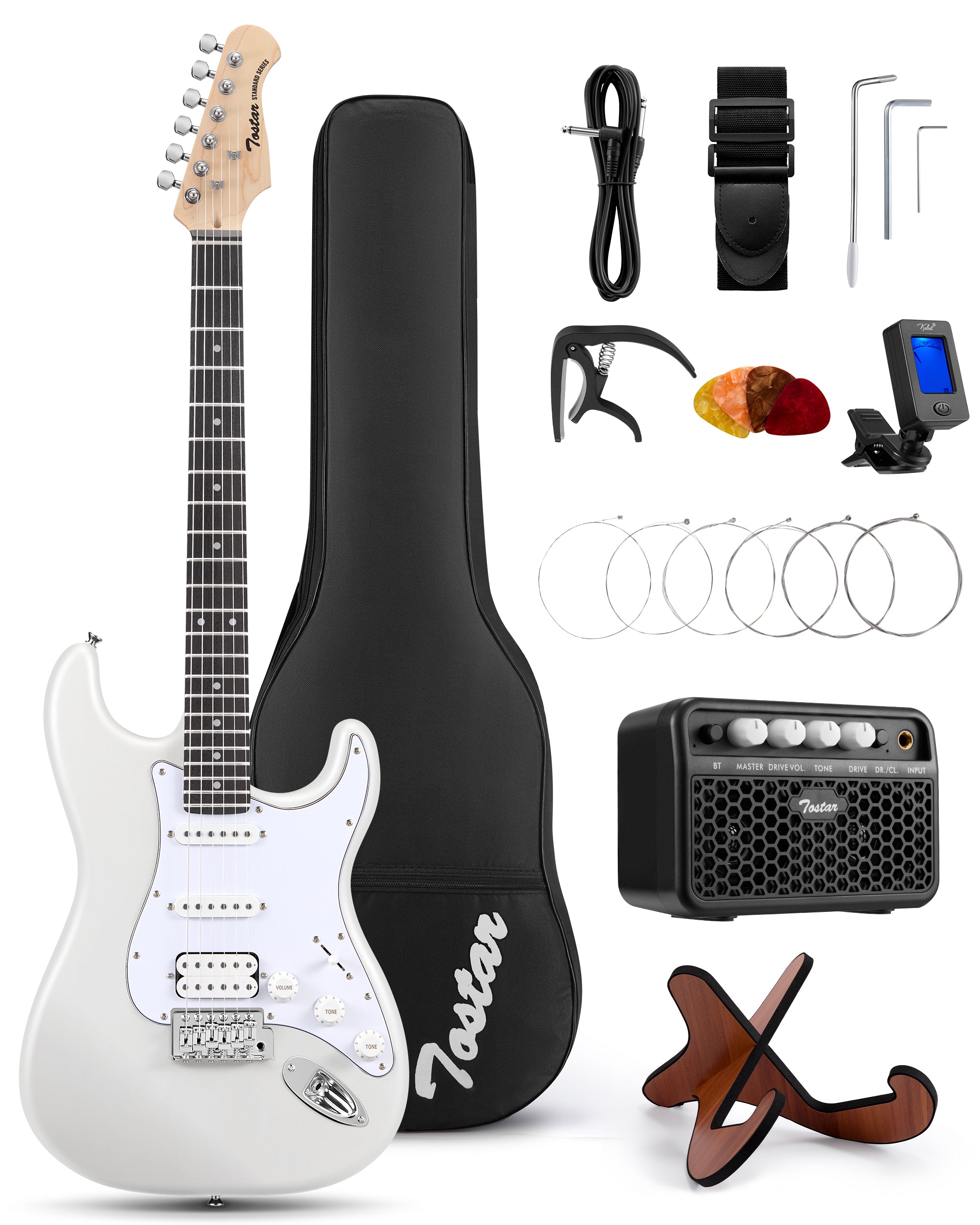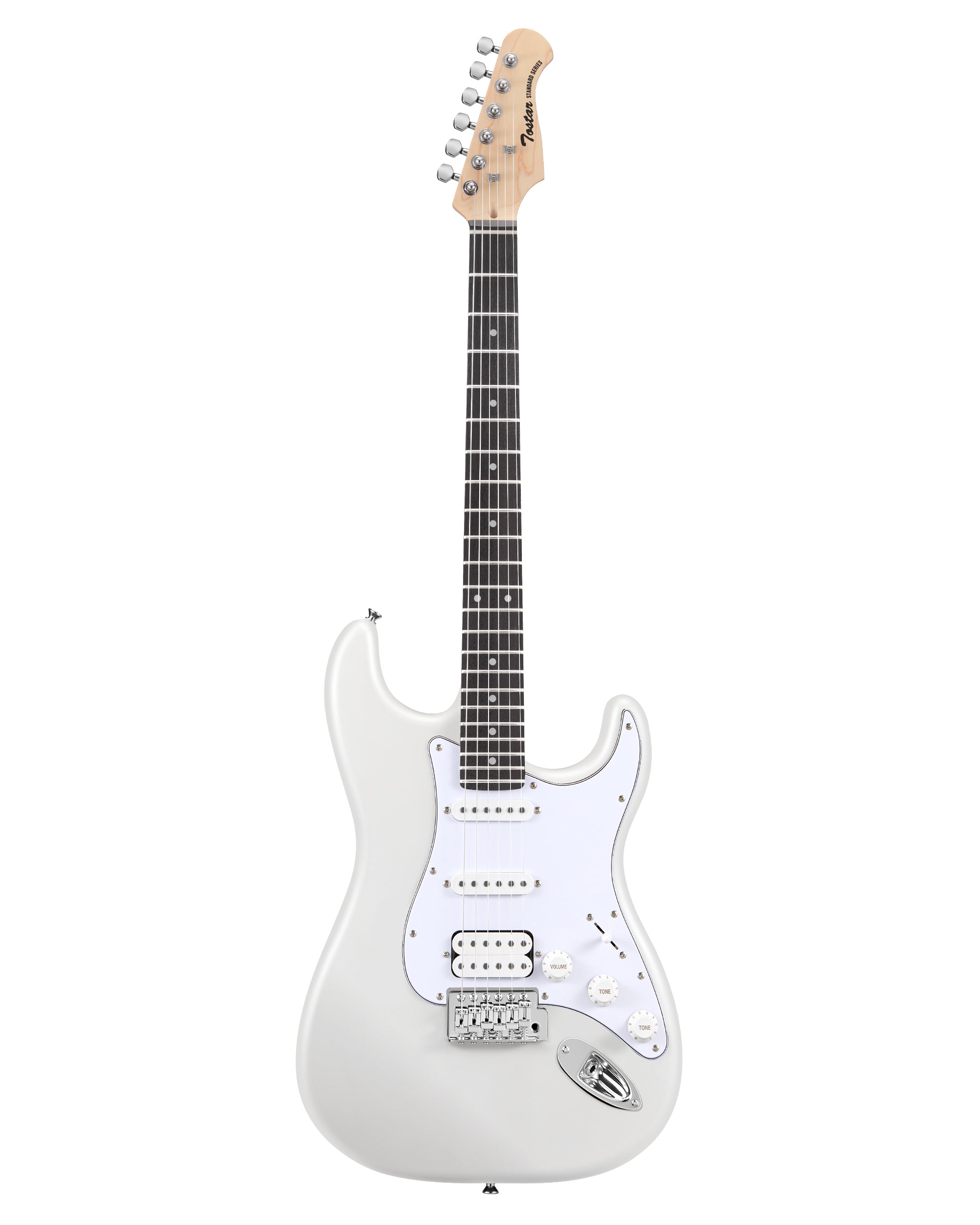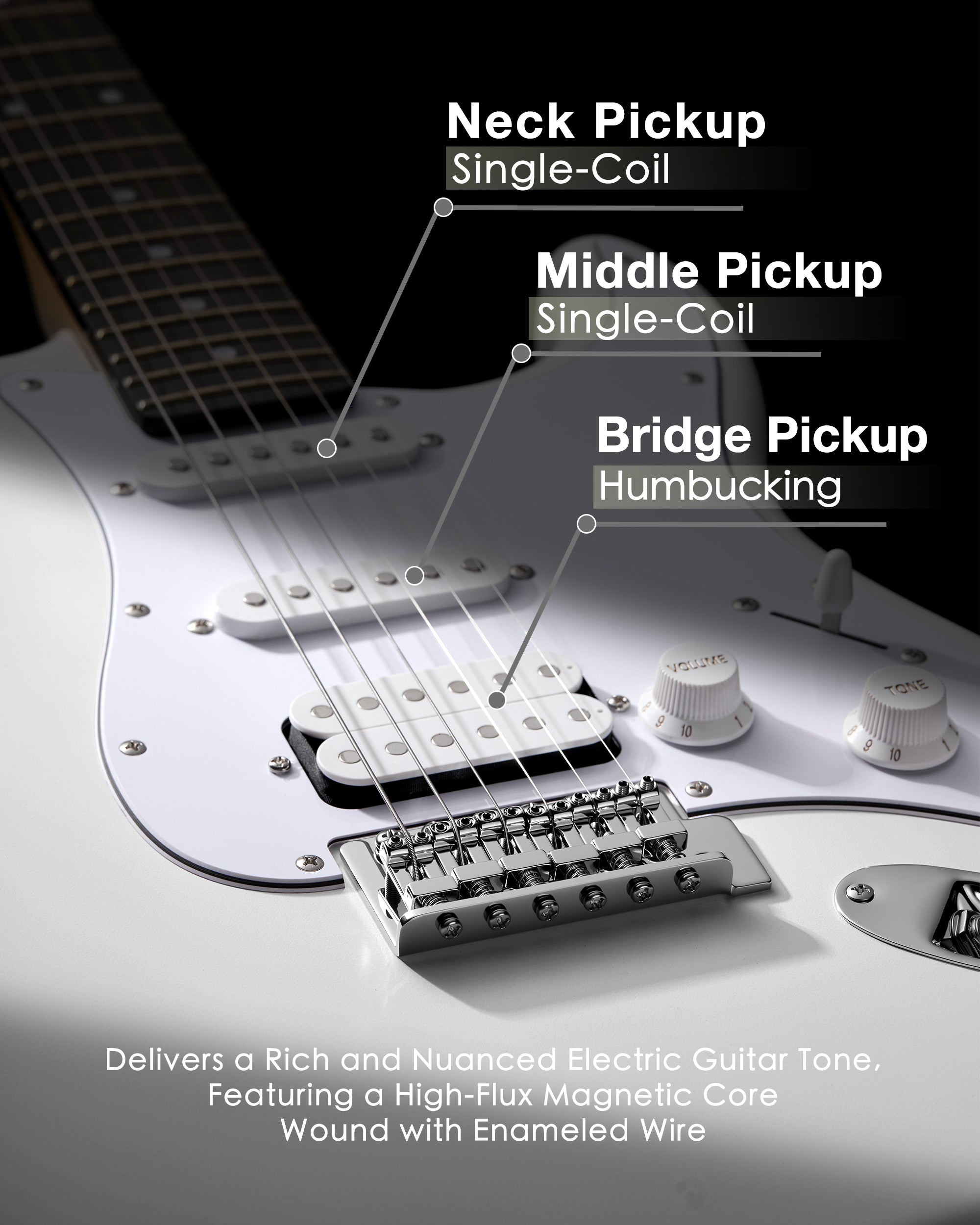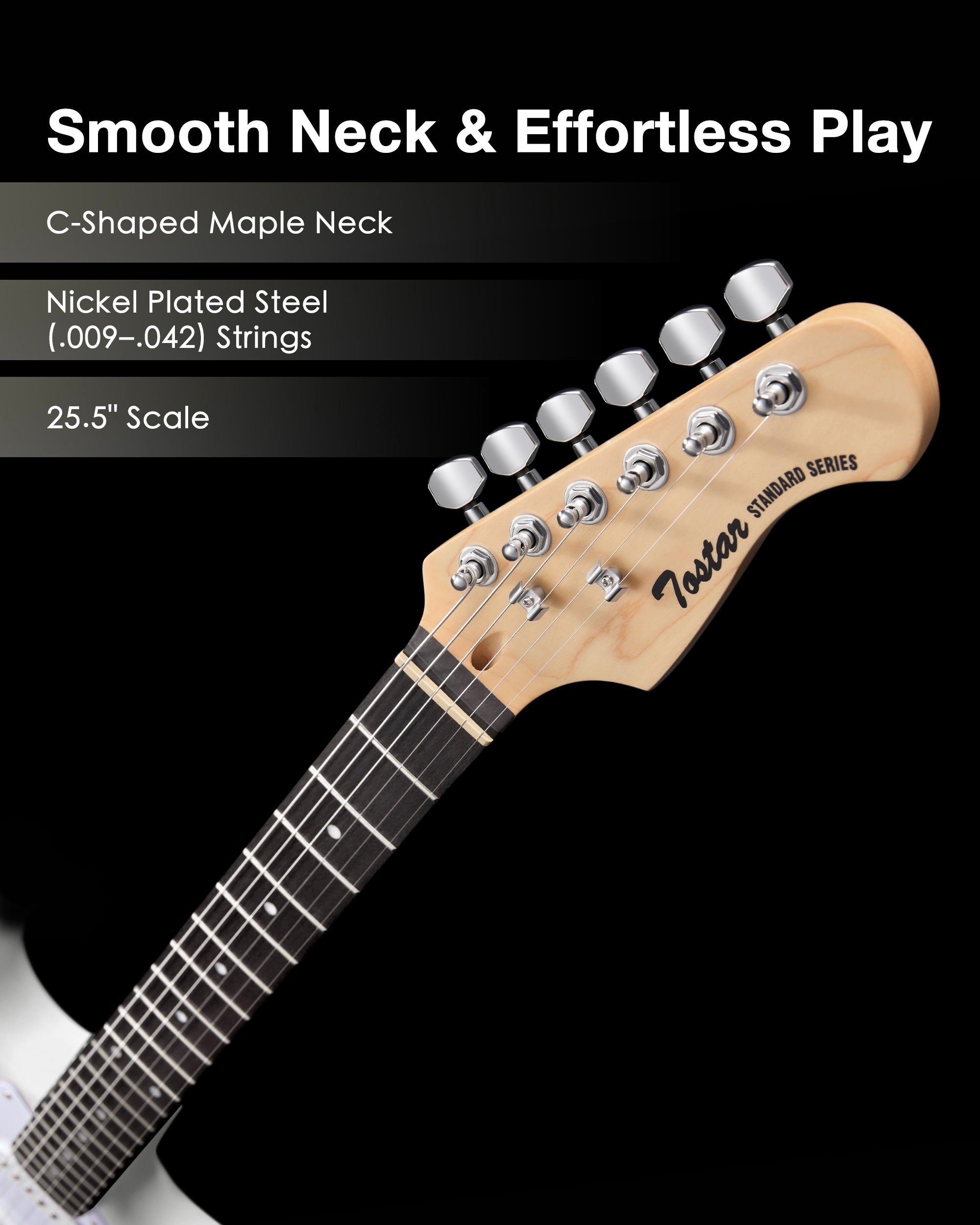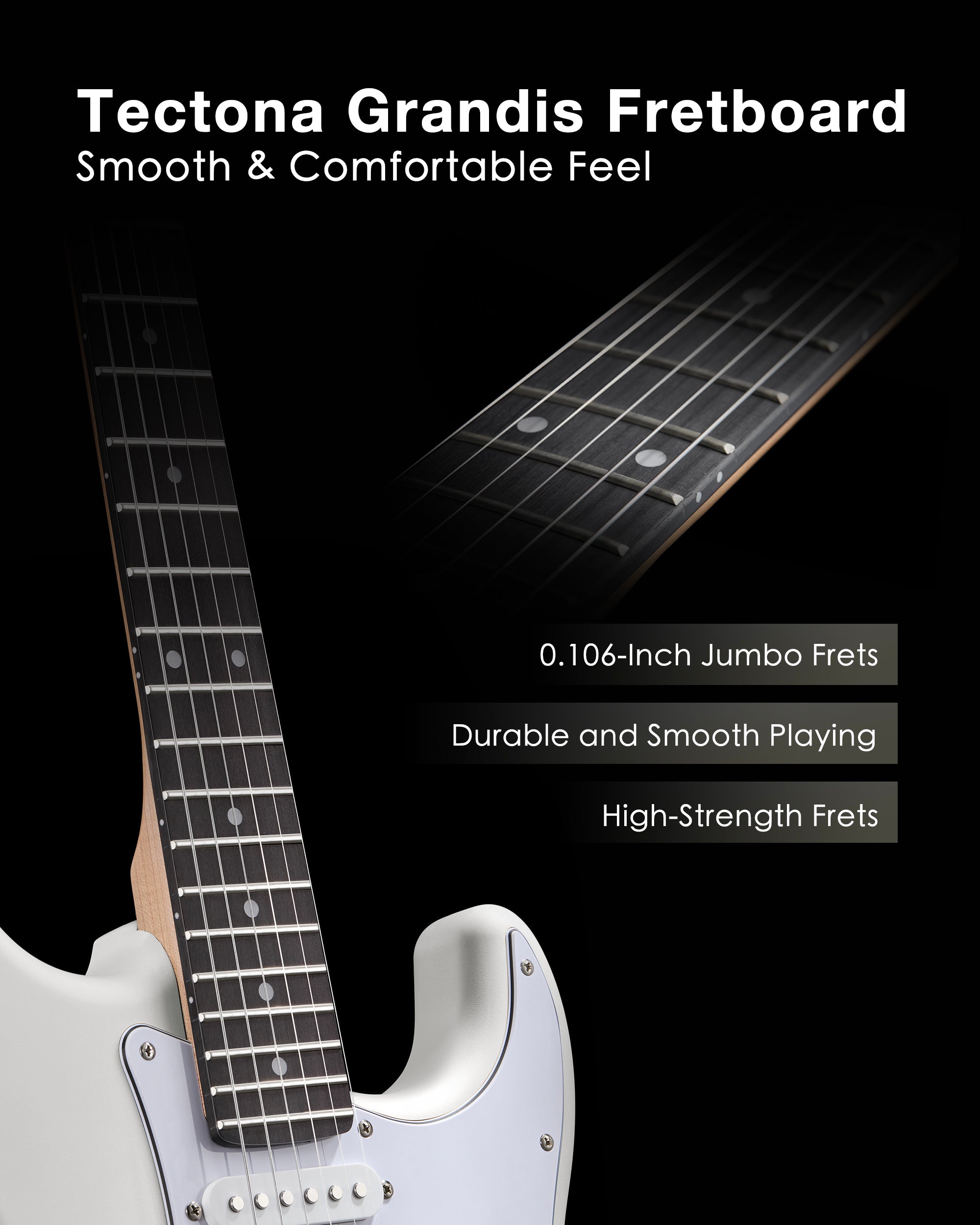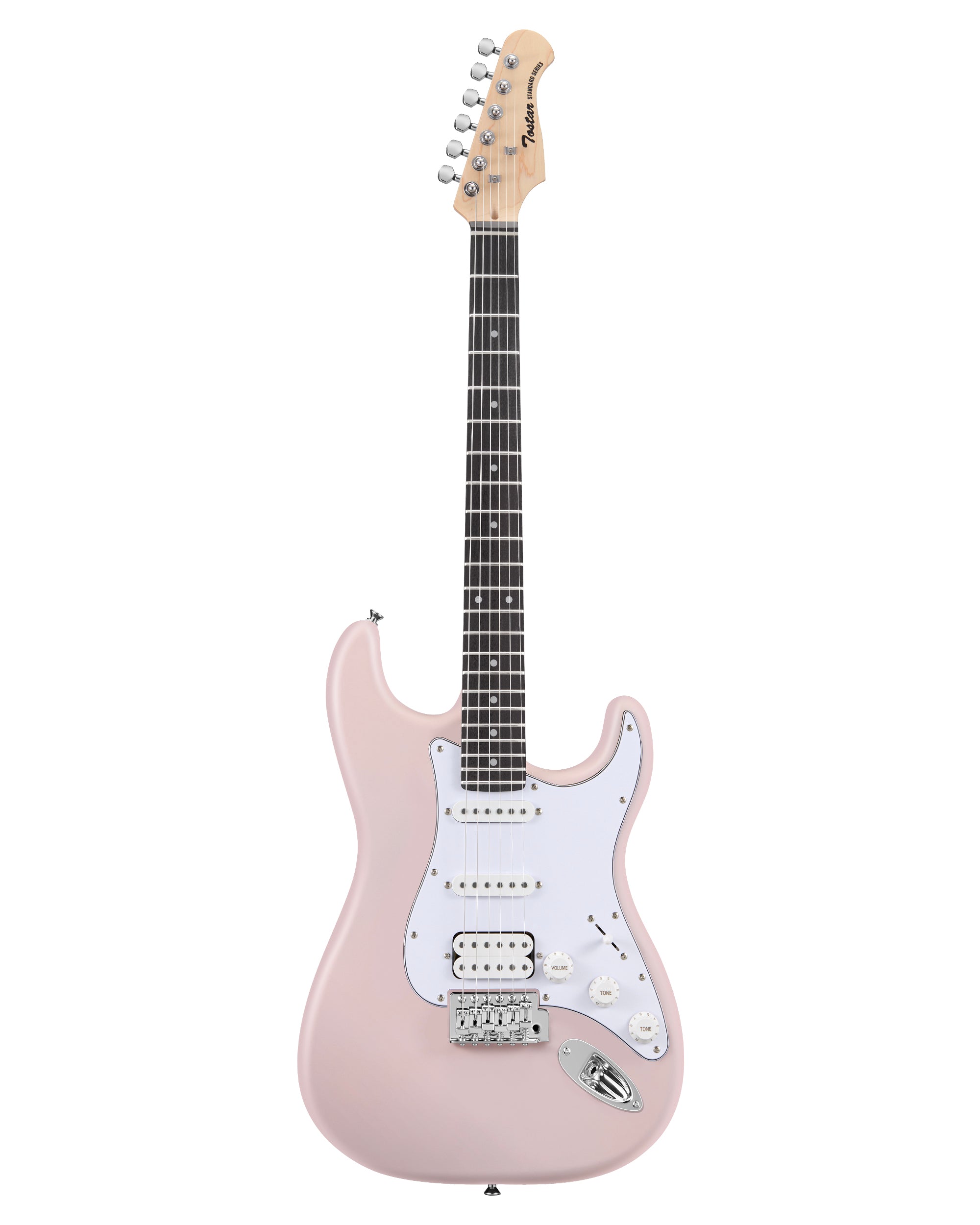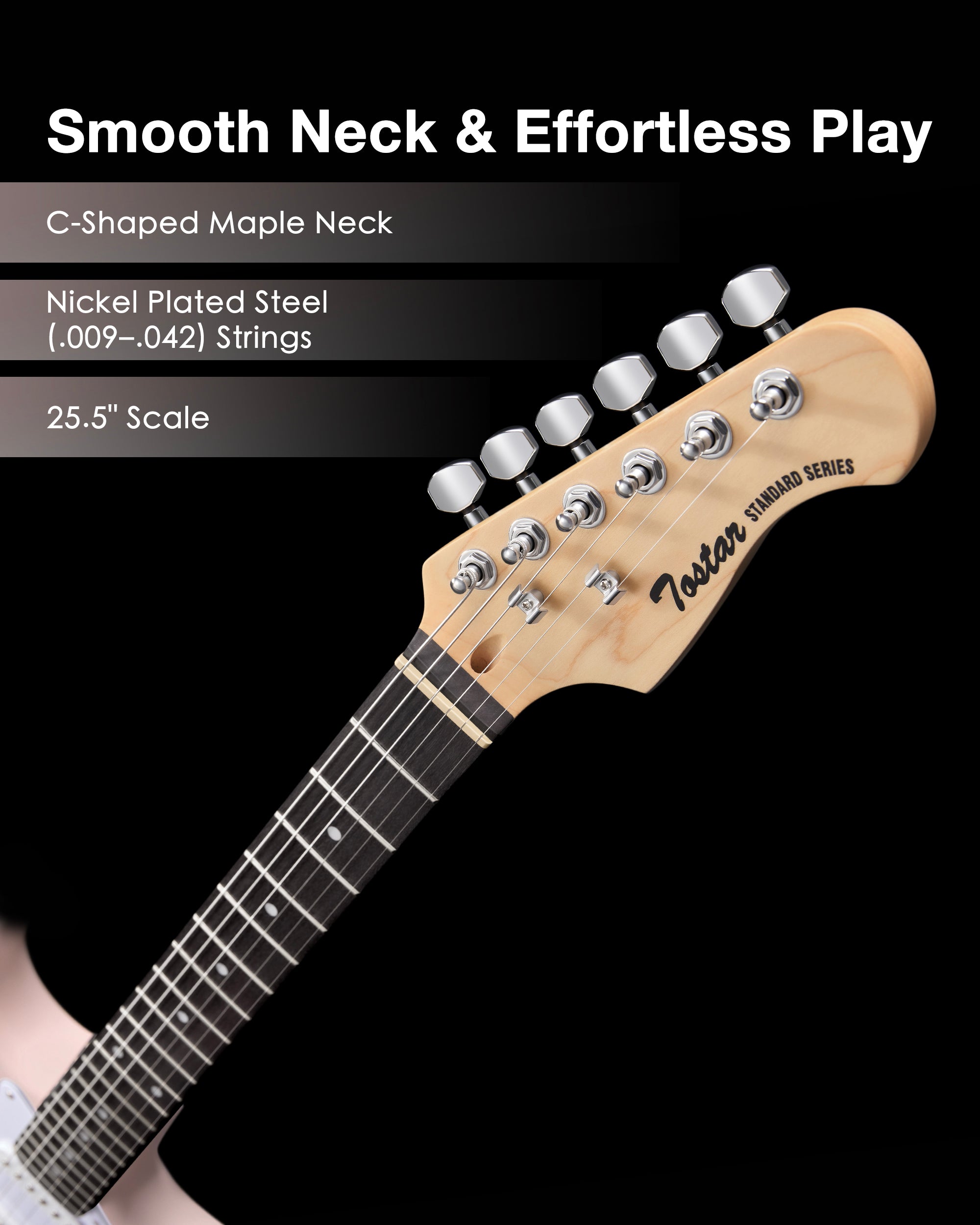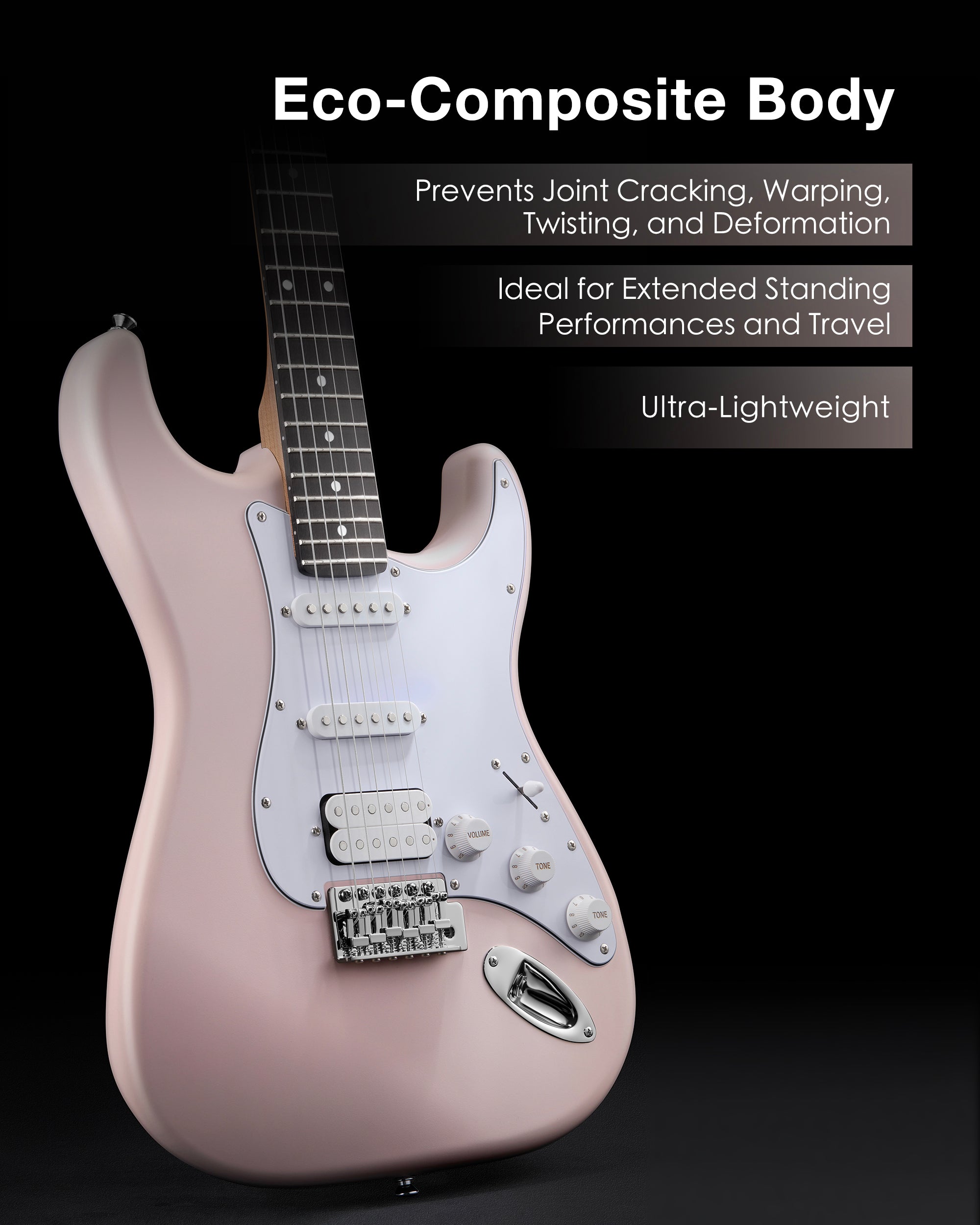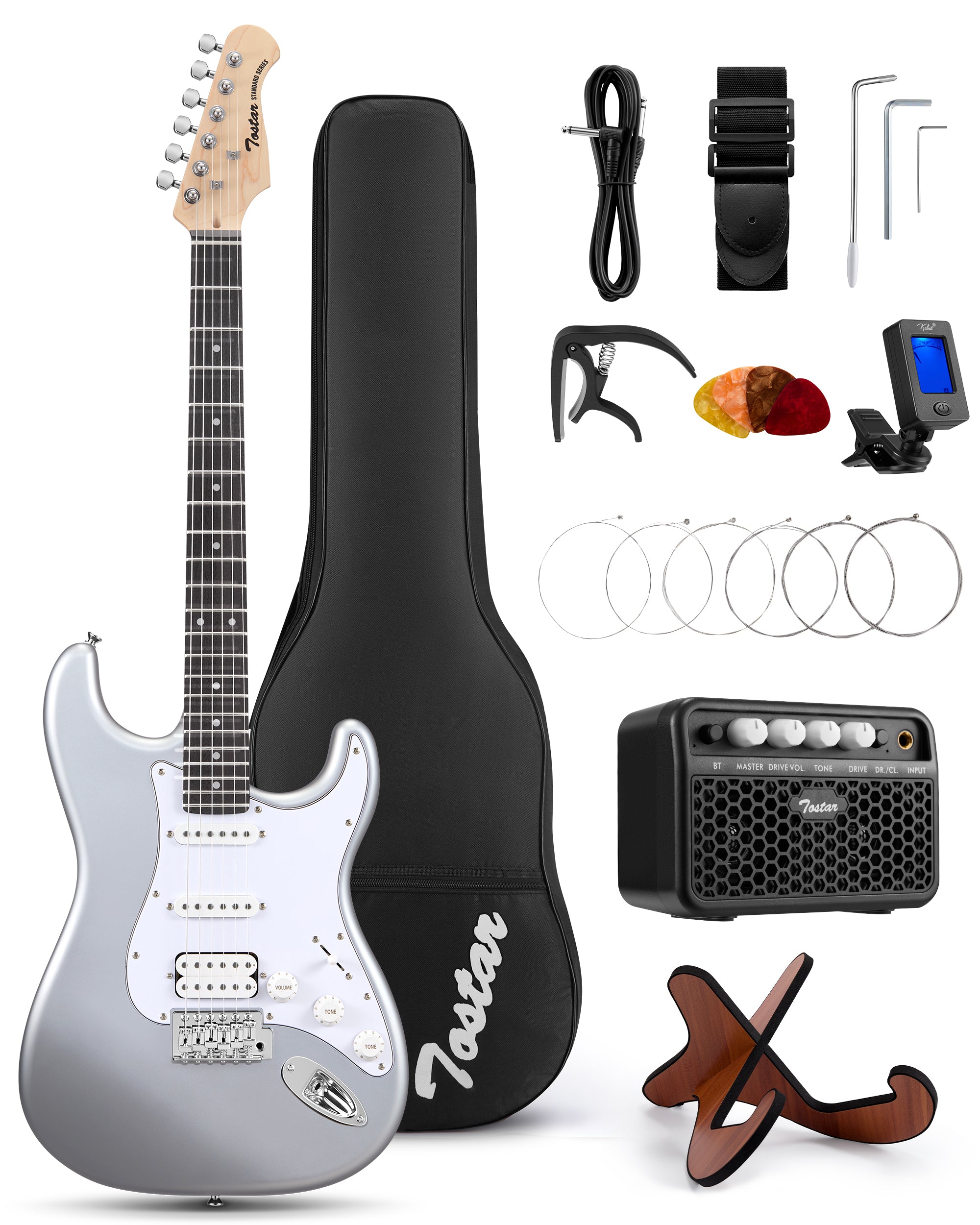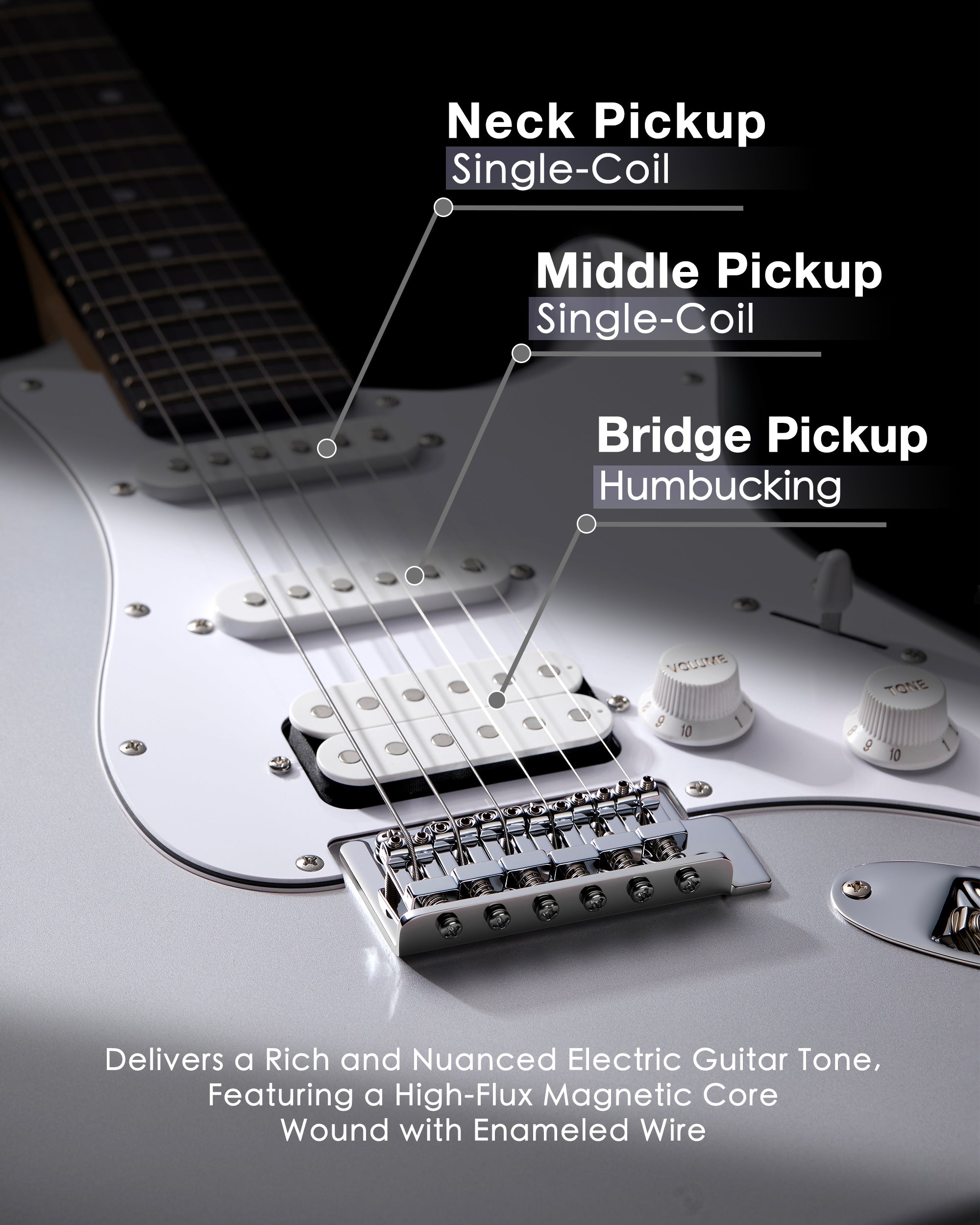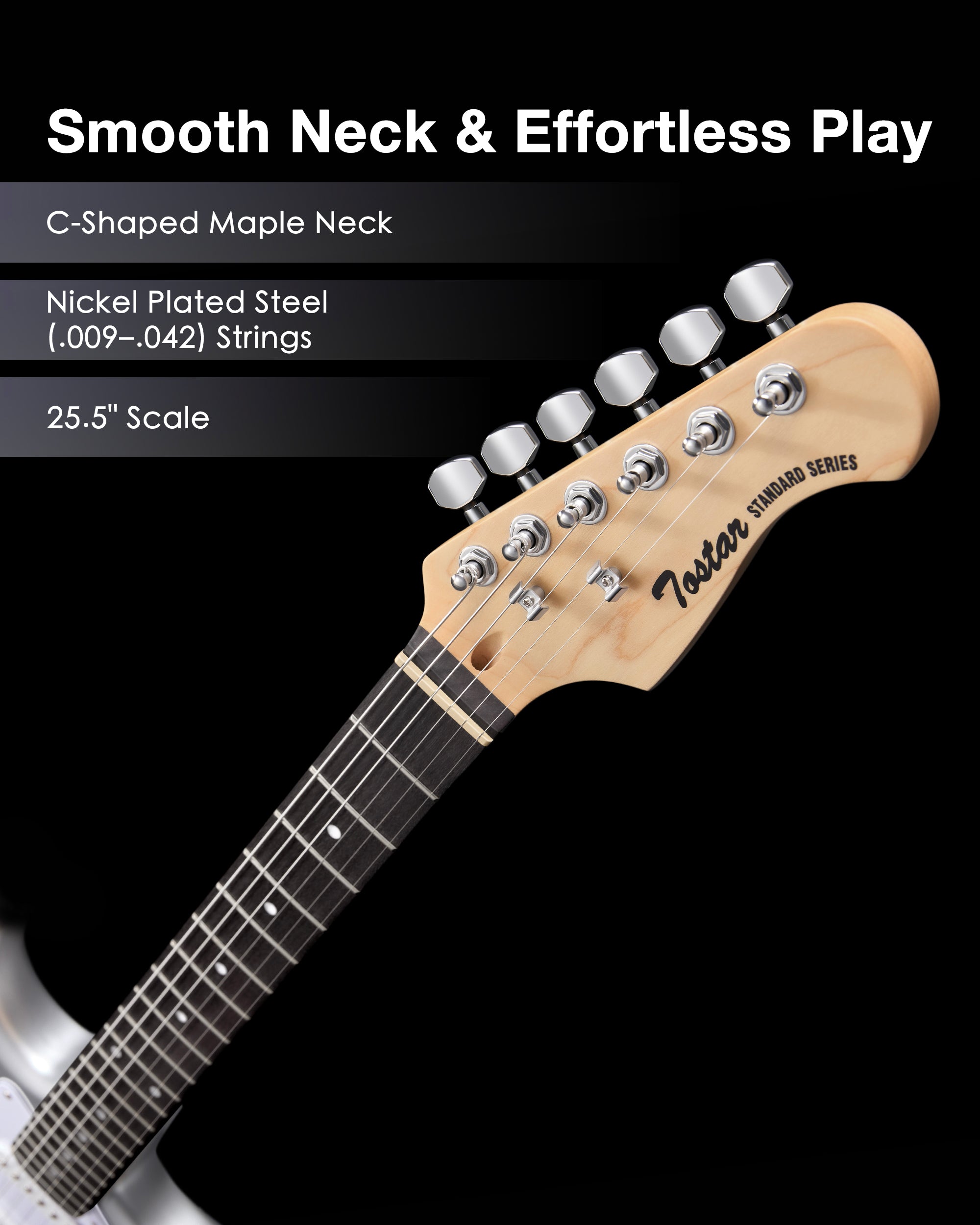
The B minor (Bm) chord is a powerhouse of emotion, blending melancholy, tension, and resolve in a way that’s essential for countless songs across genres. Often abbreviated as "Bm" in tabs and sheet music, it’s a staple in chord progressions in the keys of D and G, making it a must-learn for any guitarist. Whether you’re a beginner tackling your first barre chord or an intermediate player refining your technique, mastering Bm opens doors to richer harmonies and smoother transitions. This guide inspired by Fender's straightforward approach, explains why Bm matters, walks you through its beginner, common barre, and alternative versions, shares finger placement tips, and explores its role in iconic tracks from rock to country. Plus, we’ll show how the Tostar TST-112 Electric Guitar Kit, now on a limited-time deal for just $124.99, makes learning Bm a breeze. Let’s get your fingers on this essential chord!
Why Learn the B Minor Chord?
The Bm chord isn’t just another minor chord—it’s a frequent visitor in guitar music, especially in keys like D and G, which dominate rock, pop, folk, and country. Its dark, introspective quality adds tension and release, perfect for building drama in progressions. Unlike open chords like Em or Am, Bm requires more finger coordination, often as a barre chord, but that challenge builds finger strength and dexterity. Learning Bm helps with:
- Chord Progressions: It’s key in sequences like D-Bm-G-A or G-D-Em-Bm, common in hits from Oasis to George Strait.
- Genre Versatility: From punk-ska energy to ballad sincerity, Bm fits everywhere.
- Technique Building: Barre practice improves hand position and endurance.
- Song Repertoire: It unlocks classics like "Wonderwall" or "Heaven," expanding your playable library.
Mastering Bm isn’t optional—it’s a gateway to more advanced playing. As you’ll see in the songs section, it’s everywhere, making it worth the effort.
The Notes That Make Up the B Minor Chord
Bm is a minor triad: B (root), D (minor third), F# (perfect fifth). This creates its moody, unresolved vibe, contrasting with the brighter B major (B, D#, F#). The minor third (D instead of D#) gives it that signature "heartache" feel, while F# provides balance. Bm’s relative major is D major, and its parallel major is B major, so it pairs beautifully with chords like G, A, and D. On electric guitars like the Tostar TST-112, Bm’s tones shine through HSS pickups, offering crisp single-coil highs for clean strums or warm, gritty humbucker tones for overdriven riffs.
The Beginner Version of Bm
For those new to guitar, the full barre Bm can be intimidating, so start with this easier, three-finger version that uses open strings for a fuller sound without barring:
- Index finger: 2nd fret of the high E (1st) string.
- Middle finger: 3rd fret of the B (2nd) string.
- Ring finger: 4th fret of the G (3rd) string.
Strum down from the G (3rd) string across the top three strings, letting the D (4th), A (5th), and low E (6th) strings ring open for added resonance.
Tab representation:
E|--2---- (index)
B|--3---- (middle)
G|--4---- (ring)
D|--0---- (open)
A|--2---- (open, or optional barre if comfortable)
E|--2---- (open, or optional barre)
This version is great for beginners, as it builds finger independence without the barre strain. Practice strumming slowly to ensure each note rings clean, and gradually add the optional A and low E frets for more body. It’s forgiving and sounds surprisingly full, ideal for songs with open-string voicings.
The Most Common Version: Barre Bm in Second Position
The standard Bm is a barre chord in the second position, resembling the open Am shape shifted up two frets. It’s the version most players mean when they say “Bm,” and it’s crucial for full progressions. Here’s how to play it:
- Index finger: Barre across the 2nd fret of the A (5th), D (4th), G (3rd), B (2nd), and high E (1st) strings. Mute the low E (6th) string by lightly touching it with the tip of your index finger to keep the bass note B on the A string.
- Middle finger: 3rd fret of the B (2nd) string.
- Ring finger: 4th fret of the G (3rd) string.
- Pinky finger: 4th fret of the D (4th) string.
Strum five strings down from the A (5th) string, avoiding the low E (6th).
Tab representation:
E|--2---- (index barre)
B|--3---- (middle)
G|--4---- (ring)
D|--4---- (pinky)
A|--2---- (index barre)
E|--x---- (mute)
This shape demands finger strength, but it’s worth it for the rich, professional sound. To mute the low E, position your index finger so its tip grazes the string without fretting it—practice strumming full force once clean. If buzzing occurs, it’s normal at first; build wrist and finger power with short sessions. This barre Bm is a rite of passage, unlocking countless songs.
Barre Version Number Two: Bm in Seventh Position
For variety and ease, try this higher barre Bm in the 7th position. The frets are closer together here, requiring less pressure, making it physically simpler while offering a brighter tone due to the neck’s radius:
- Index finger: Barre across the 7th fret of the low E (6th), A (5th), D (4th), G (3rd), B (2nd), and high E (1st) strings.
- Ring finger: 9th fret of the A (5th) string.
- Pinky finger: 9th fret of the D (4th) string.
Strum all six strings down from the low E (6th).
Tab representation:
E|--7---- (index barre)
B|--7---- (index barre)
G|--7---- (index barre)
D|--9---- (pinky)
A|--9---- (ring)
E|--7---- (index barre)
This version is great for solos or when you need higher-fret access. The reduced stretch makes it easier on the hand, and it sounds fuller with all six strings. Practice transitioning between this and the second-position Bm to expand your options.
Tips for Playing Bm Cleanly
- Barre Pressure: Roll your index finger slightly toward the fretboard’s lower edge for better contact. Use just enough force to clear the strings—over-pressing causes pain.
- Thumb Position: Place your thumb on the back of the neck, centered opposite your index finger, for leverage. Keep your wrist straight to avoid strain.
- Muting the Low E: In the second-position Bm, lightly touch the low E with your index finger’s tip to mute it without fretting—strum confidently once set.
- Build Strength: Start with 1-2 minute holds, gradually increasing time. Use a metronome to practice strumming while holding the shape.
- Check Each Note: Pluck strings individually to ensure no buzzing. Adjust finger arching if adjacent strings mute.
- Hand Relaxation: Squeeze the neck like a tube of toothpaste from the bottom—firm but not tense.
These tips turn Bm from a hurdle into a friend. Practice in short bursts to avoid fatigue.
Common Challenges and Solutions
- Buzzing or Muted Strings: Common in barre versions—solution: increase finger pressure gradually and ensure even barring. Practice barring without other fingers first.
- Finger Stretch: The ring-to-pinky span feels awkward—solution: do finger independence exercises (e.g., spider crawl across frets) for 5 minutes daily.
- Hand Fatigue: Barre chords tire beginners—solution: take 30-second breaks, use the beginner version as a warm-up, and build endurance over weeks.
- Muting Low E Incorrectly: It rings or over-mutes—solution: position your index finger so the fleshy tip just grazes the string, testing with light strums.
- Transition Difficulty: Switching to/from Bm feels clunky—solution: practice Bm to G or A at 60 BPM, slowing down for accuracy.
Patience is key—many great players struggled with Bm at first.
Songs Featuring the Bm Chord
Bm’s versatility shines in hits across genres. Here’s a curated list to practice with:
Rock Songs
- "Heaven" by Warrant: Bm adds glam metal drama in the chorus—use the second-position barre for punch.
- "Love Song" by Tesla: Bm’s weight anchors the '90s power ballad—try the beginner version for acoustic feel.
- "Burning Love" by Elvis Presley: Bm fuels the rock 'n' roll energy—seventh-position for higher, fiery tone.
- "Time Bomb" by Rancid: Bm drives the punk-ska urgency—barre version for aggressive strumming.
Country Songs
- "All My Ex's Live in Texas" by George Strait: Bm evokes heartfelt twang—beginner version suits the narrative style.
- "Always on My Mind" by Willie Nelson: Bm’s somberness fits the classic—second-position for warm, full sound.
- "Never Come Back Again" by Austin Plaine: Bm adds modern country longing—seventh-position for brighter leads.
Pop Songs
- "California Girls" by the Beach Boys: Bm brings harmonic surprise—beginner version for sunny vibes.
- "Daydream Believer" by the Monkees: Bm adds pop introspection—barre for '60s charm.
- "1, 2, 3, 4" by Plain White T's: Bm underscores the acoustic pop—second-position for clean transitions.
- "Another Love" by Tom Odell: Bm builds the emotional swell—seventh-position for piano-like clarity.
These songs show Bm’s range—from rock anthems to pop ballads. Grab tabs from Ultimate Guitar and play along, focusing on clean execution.
Why the Tostar TST-112 Makes Learning Bm Easier
For beginners conquering Bm, the Tostar TST-112 Electric Guitar Kit is a game-changer, now available at a limited-time deal of just $124.99 for the full kit! This 39-inch full-size guitar features a slim C-shaped maple neck and grapefruit wood fretboard, easing the barre stretch for Bm’s finger placement. Its HSS pickups deliver sparkling single-coil highs and warm humbucker grit, ensuring Bm’s notes (B, D, F#) ring out cleanly in any version—beginner, second-position, or seventh-position. The low action and rounded frets reduce buzzing, helping you focus on technique. The included 10W amplifier with Hi-Gain and Clean channels amplifies Bm’s moody character, from clean folk strums to overdriven rock. The kit also includes extra strings, tuner, capo, strap, picks, cable. Lightweight at 13 pounds and available in nine vibrant colors, it’s a beginner-friendly package that makes practice enjoyable. Don’t miss this limited-time offer—grab the TST-112 kit for $124.99 now: Tostar TST-112 ST Electric Guitar

Practice Routine for Mastering Bm
Dedicate 20 minutes daily for a week to build Bm muscle memory:
- Warm-Up (5 mins): Practice the beginner Bm, strumming each string for clarity. Hold for 30 seconds, release, repeat 5 times.
- Barre Drill (10 mins): Work the second-position barre Bm, focusing on even pressure. Strum slowly, checking for buzzing—add middle, ring, and pinky fingers one by one.
- Alternative Version (3 mins): Practice the seventh-position Bm for contrast, noting the easier stretch.
- Transitions (2 mins): Switch from Bm to G major (open G shape) 10 times at 60 BPM.
- Song Application (5 mins): Play the intro to “Heaven” or “Wonderwall,” using Bm in context.
Use a metronome for rhythm, and record yourself to spot improvements. Rotate versions to avoid fatigue.
Further Learning Resources
- Online Lessons: Justin Guitar’s free Bm tutorials or Fender Play’s chord library for structured practice.
- Apps: Yousician for interactive Bm exercises; Guitar Tuna for tuning before sessions.
- Communities: Join r/guitar on Reddit for barre chord tips and feedback.
Conclusion
The B minor chord, with its moody B, D, and F# triad, is a cornerstone of guitar playing, essential for progressions in D and G keys. From the beginner three-finger version to the challenging second-position barre and the easier seventh-position alternative, Bm rewards practice with versatility and depth. Songs like “Heaven,” “Wonderwall,” and “Always on My Mind” showcase its power across rock, pop, and country. The Tostar TST-112’s slim neck and vibrant HSS pickups make learning Bm accessible and fun, now at a limited-time deal of just $124.99 for the full kit. Start with the beginner version, build to the barre, and watch your playing transform. Grab your TST-112 at this unbeatable price, practice those finger placements, and let Bm’s tension and release fuel your musical fire!

